It was relatively recently that it occurred to me to visit several monuments of culture that are located rather close to my flat, in the west, predominantly suburban parts of Belgrade. As I was not in a hurry to carry out this idea, from time to time I asked some friends to join me. They were mostly not interested, although a couple of them could not fit into my plans bearing in mind their obligations. This meant that I went on my own, which was quite all right. It was not the first time and it will certainly not be the last.
To start with, here is the map:
In line with the sightseeing plan I had prepared, first I headed for the Memorial Graveyard in Bežanijska kosa. It was not quite clear to me how to get there, so I first drove to some residential buildings and then transferred to Bežanija Old Cemetery. From there I finally had a good view, but this is not the most direct way you can get to this memorial graveyard. I have marked on my map a point where you should actually enter – on the spot it does not seem like a passage intended for cars, but there are some houses along the short, access street, so if somebody wants to get here, there are several ways.
 View from Bežanija Old Cemetery at the Memorial Graveyard in Bežanijska kosa
View from Bežanija Old Cemetery at the Memorial Graveyard in Bežanijska kosa
The Memorial Graveyard in Bežanijska kosa is categorised as a landmark. Namely, this piece of land is called Belanovićeva rupa and, during WWII, the occupation forces (the Germans and the Ustashas (Croatian fascist and ultranationalist forces, since this was the territory of the Independent State of Croatia at the time) buried here some 8000 people in 70 mass graves. These people were either killed here on the spot or had died in the camps as a consequence of torture and were then brought here and thrown into the mass graves.
 Memorial Graveyard in Bežanijska kosa
Memorial Graveyard in Bežanijska kosa
Nowadays, this looks almost like a pleasant park, but one should in no way forget that this was a place of the perishing and burying of a large number of people. Because of this, a memorial marker was placed here in 1951.
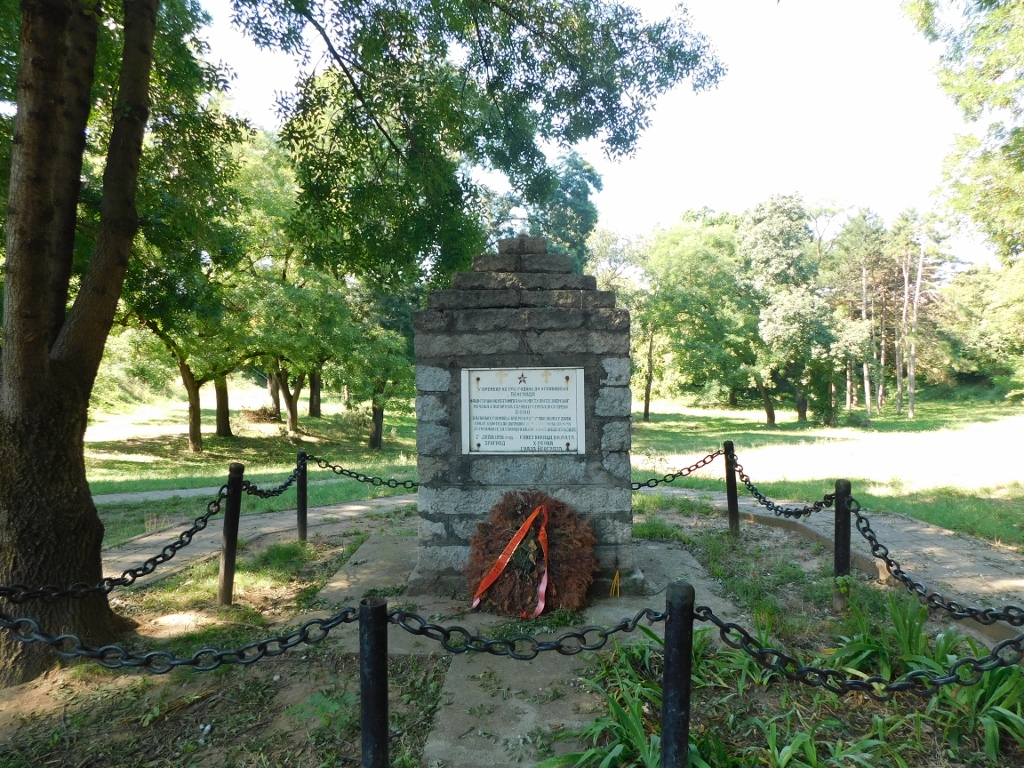 Memorial Graveyard in Bežanijska kosa
Memorial Graveyard in Bežanijska kosa
After this, I went back to the car and drove down to the flat parts of Bežanija which is the oldest settlement on the territory of Novi Beograd, one of Belgrade’s largest municipalities. The research has shown that there was a settlement here already during the Neolithic period, but a more permanent settlement was originally mentioned in 1512 which is also the time when the name of the place first appeared. I find the name to be very cute, since it can translate as “the running-away town”. Namely, it was in this year that 32 Serbian families fled before the Ottomans, i.e., they were running away, crossing the Sava river and settling on the territory of Hungary. Over time, the number of inhabitants increased and so did their needs and thus a primary school building was erected in 1891.
Today, this is the oldest preserved building from the second half of the 19th century on the territory of Novi Beograd and this is one of the reasons why the building is categorised as a monument of culture. When a new primary school was opened nearby in 1959, the old one had its purpose changed and meanwhile it has been rather neglected.
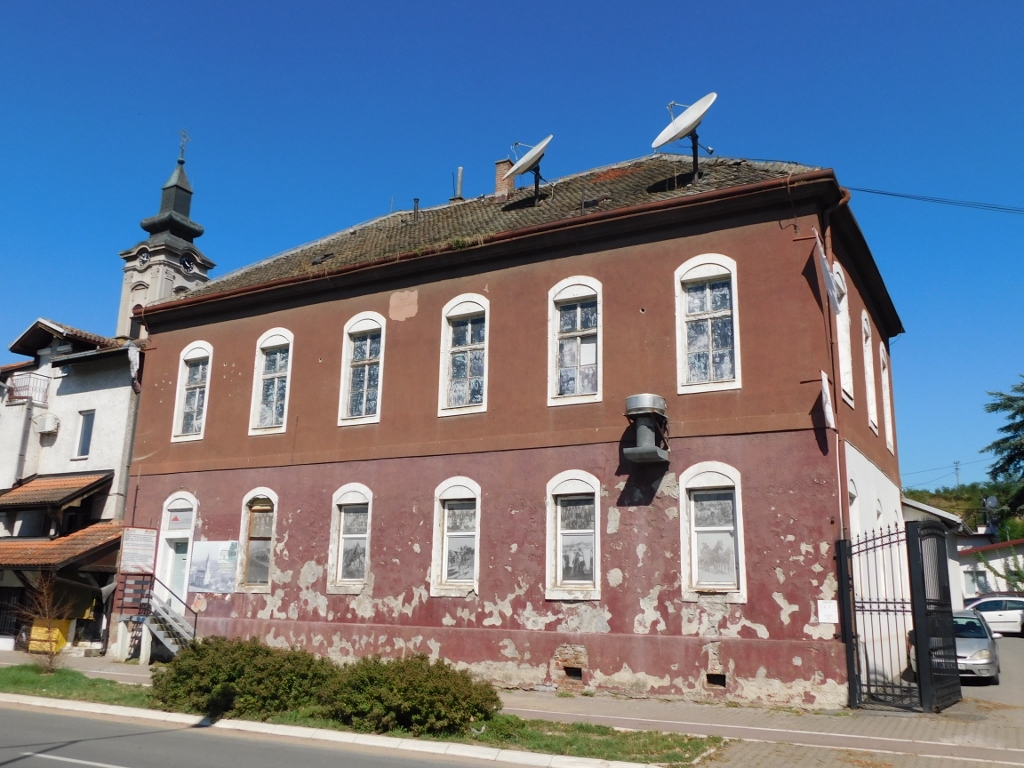 “The Old Primary School” building in Bežanija
“The Old Primary School” building in Bežanija
For a while it was a local health-care centre and afterwards it was used by the local “Bežanija” football club. Today, as is written on one of the boards in front of the building, it is “the cultural temple of Bežanija.” I must admit that the building seemed to be neither a temple nor a cultural facility. However, as I also read in some other place, it seems that the building is being renovated, since there are plans to have a cultural centre of this part of the city here, as well as the Museum of Bežanija, plus premises of FC “Bežanija.” Well, we’ll see...
For the time being, I found it interesting to go into the courtyard and to look at the building from all sides. This was a good idea, not because I saw anything worthwhile as regards the building itself, but quite unexpectedly I got to a football pitch that belongs precisely to FC “Bežanija.” Although I had passed along the street where the building is countless number of times, I had no idea that there was a football pitch behind it, which is not a small structure at all.
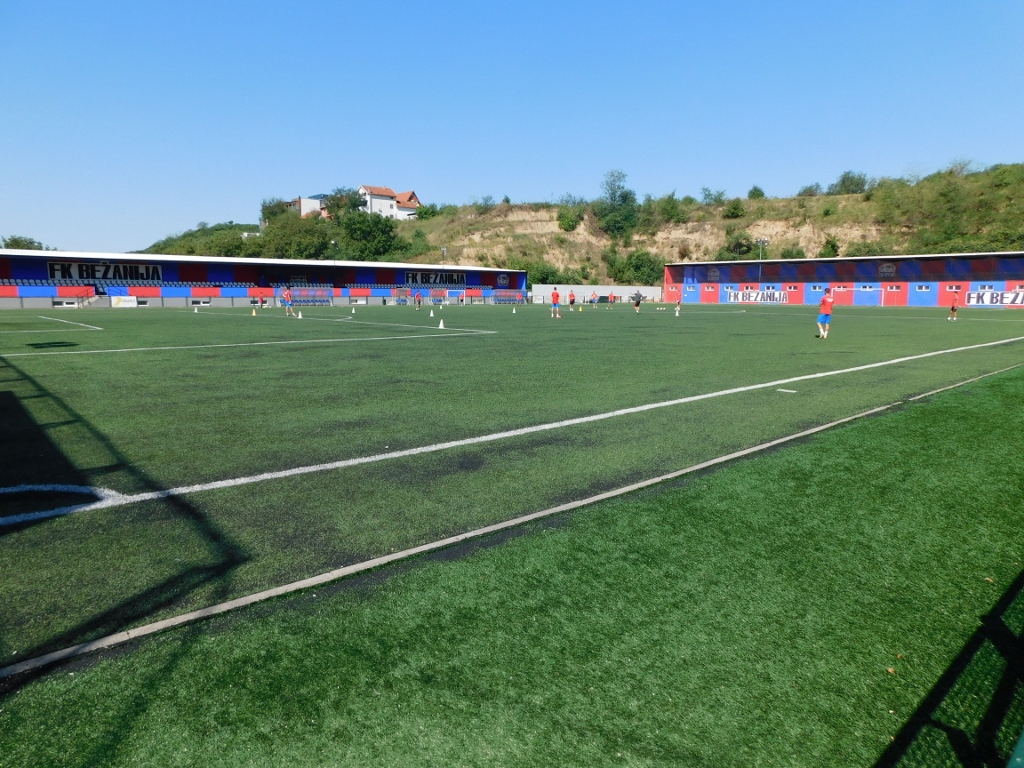 Football pitch of FC “Bežanija”
Football pitch of FC “Bežanija”
Almost directly next to the building of the “Old Primary School” there is yet another monument of culture and this is the Church of St. George.
 Church of St. George
Church of St. George
 Church of St. George, a detail
Church of St. George, a detail
Written data show that there was a church in this place already around the middle of the 16th century, but the one that can be seen here today was built in 1827, which would mean that it is older than the primary school building, but I guess churches and “ordinary” buildings belong to different categories. In any case, the church was renovated more seriously in 1938 and the new iconostasis and wall decorations date back to that period.
I must admit that I could not look at the iconostasis and the wall decoration in any detail during my visit. Namely, when I entered the church, there was a christening going on. I found it to be very touching, since the little girl started to cry at one moment, reminding me of Petar, my godson, who also cried while I was holding him, as his godmother, during his christening. Today, he is a big and strong young man, so I wish for this girl to be protected by God and to grow to be a nice and good person.
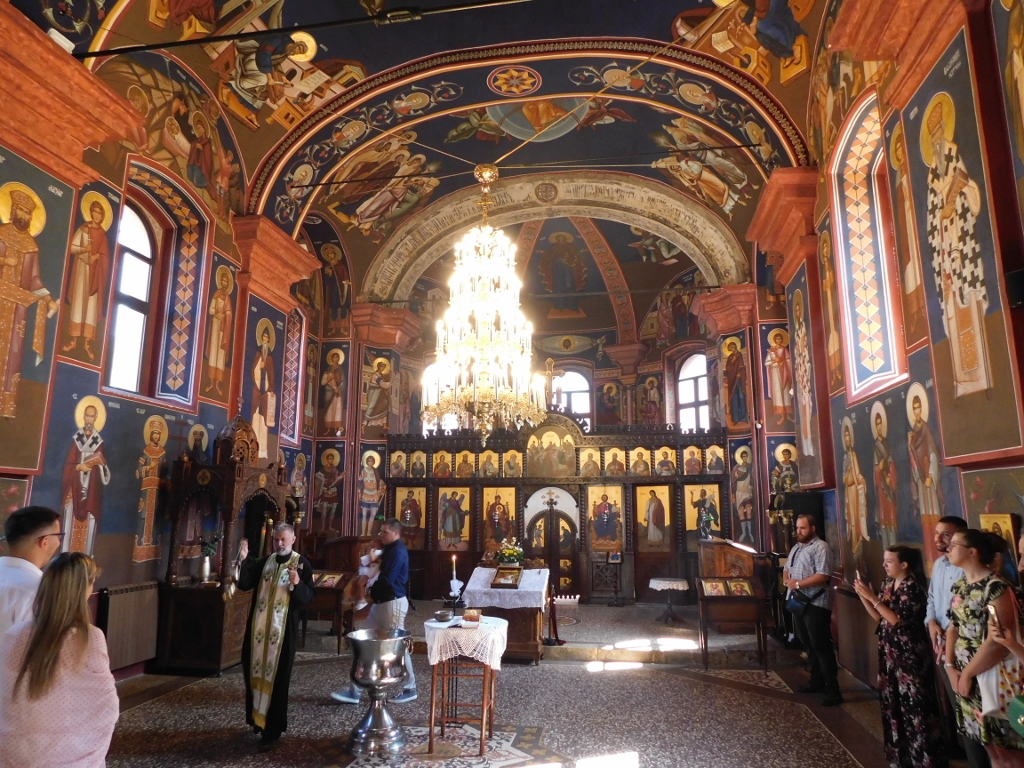 Christening at the Church of St. George
Christening at the Church of St. George
I stayed in the church for a very short period of time, just to take a couple of photos, and then I got back into the car and headed for the village of Jakovo that is situated around 16 km west of Bežanija.
I went several times towards Jakovo in the past, but not in the recent years. In the meantime, a new road was built that connects Bežanija with a system of motorways and the ring road around Belgrade, so I found this interesting. In order to get to Jakovo, nowadays you have to go via Surčin, but that was not a problem and so soon enough I reached the centre of the village and the Church of the Ascension of our Lord that is a monument of culture. First I took a photo from the street side and then also from the churchyard.
 Church of the Ascension of our Lord in Jakovo
Church of the Ascension of our Lord in Jakovo
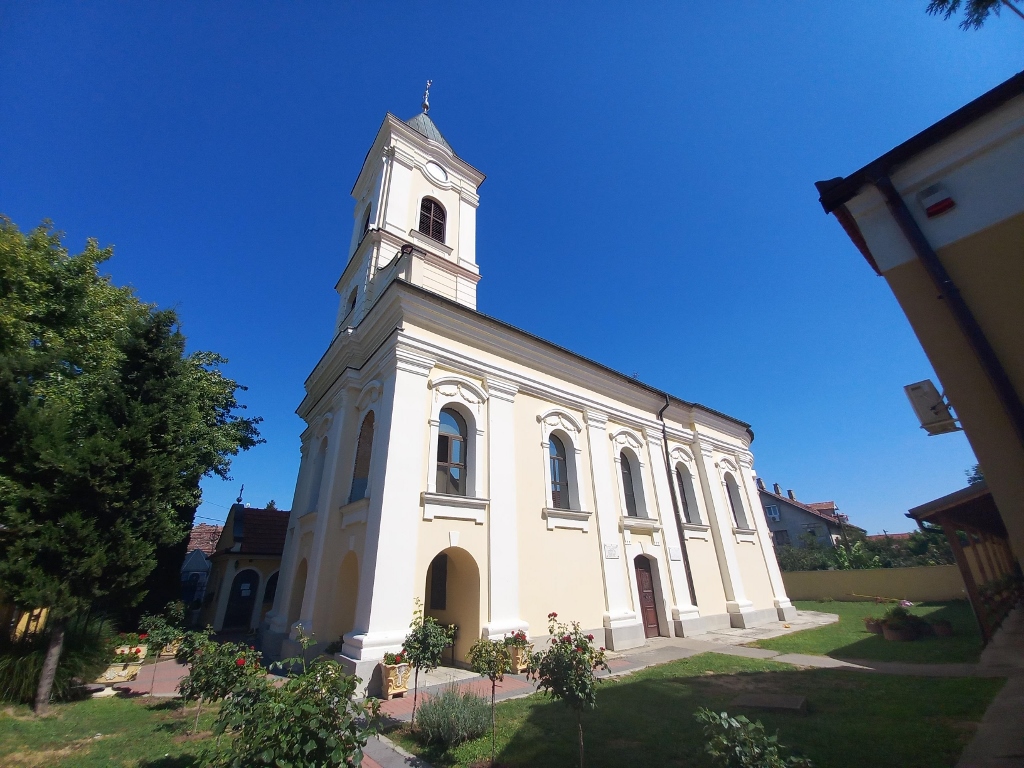 Church of the Ascension of our Lord in Jakovo
Church of the Ascension of our Lord in Jakovo
The construction of the church was completed in 1810 on the spot where there used to be another church from the 18th century. Looking from the outside, one can see different style elements. The iconostasis made around the middle of the 19th century is particularly important, as well as the icons within the iconostasis and the wall paintings that were made in the period 1855-1862 by a famous painter from Zemun, Živko Petrović. The church is also renowned for its icons that are specially venerated (and kissed), the furniture, as well as books from the 17th and the 18th centuries.
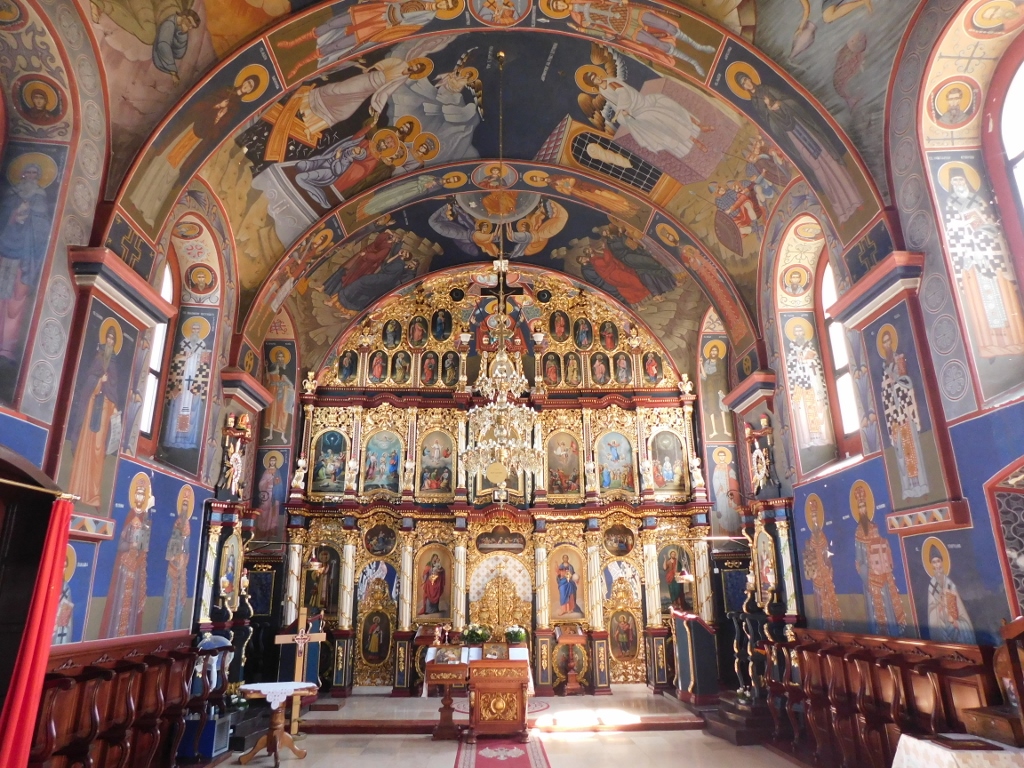 Church of the Ascension of our Lord in Jakovo, a detail
Church of the Ascension of our Lord in Jakovo, a detail
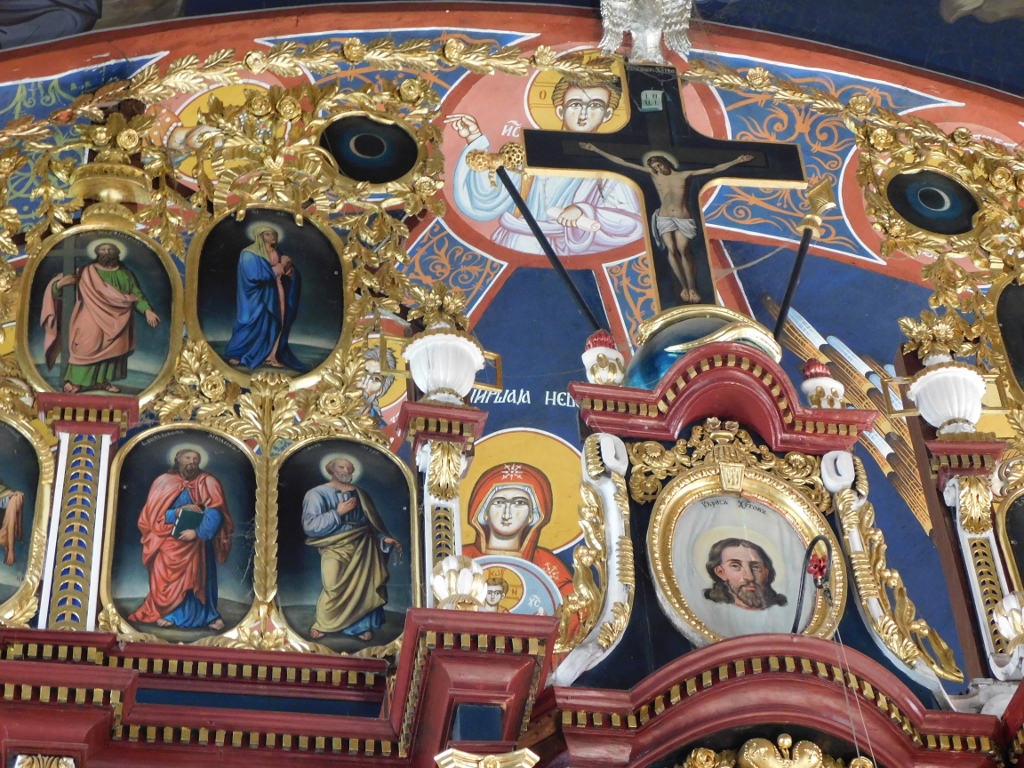 Church of the Ascension of our Lord in Jakovo, a detail
Church of the Ascension of our Lord in Jakovo, a detail
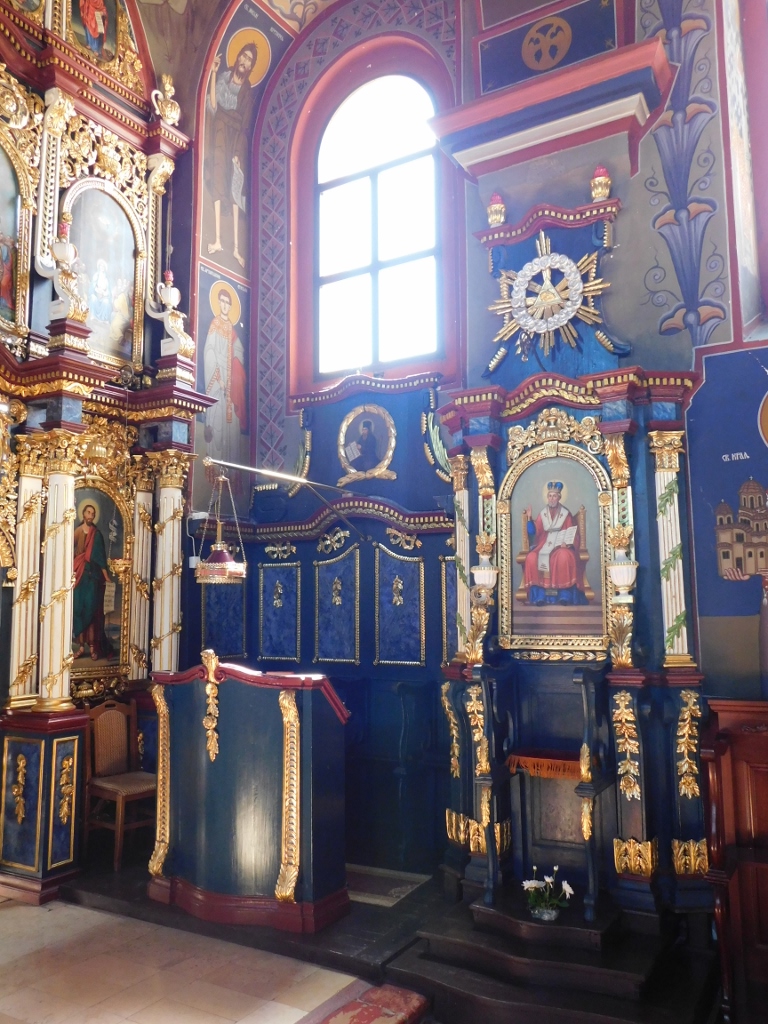 Church of the Ascension of our Lord in Jakovo, a detail
Church of the Ascension of our Lord in Jakovo, a detail
 Church of the Ascension of our Lord in Jakovo, a detail
Church of the Ascension of our Lord in Jakovo, a detail
On the territory of Jakovo, on the way to Boljevci, there is a turn on the right-hand side that leads directly to an immovable cultural property of great importance, so I headed that way. Along the road, I came across a large number of rooks (Corvus frugilegus) that were picking something on the freshly ploughed field. It was good that they were minding their own business and that this was not a scene from “The Birds” film.
 Rooks by the road
Rooks by the road
A couple of kilometres from the main road there is this place I came to visit and that is Fenek Monastery.
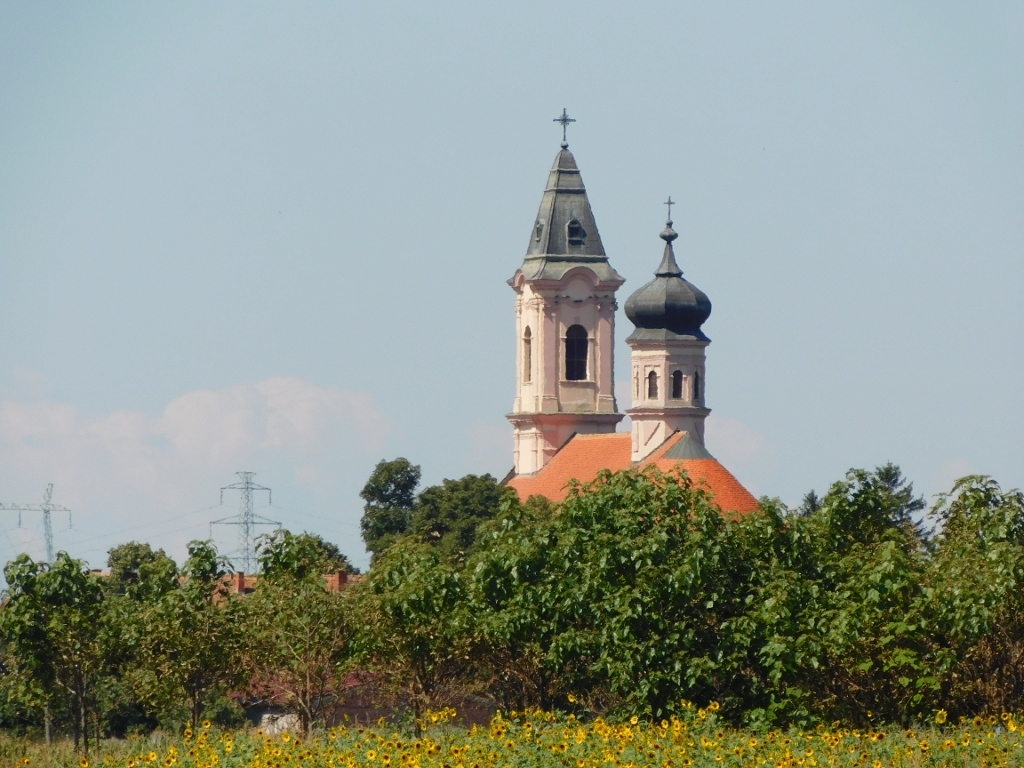 Fenek Monastery
Fenek Monastery
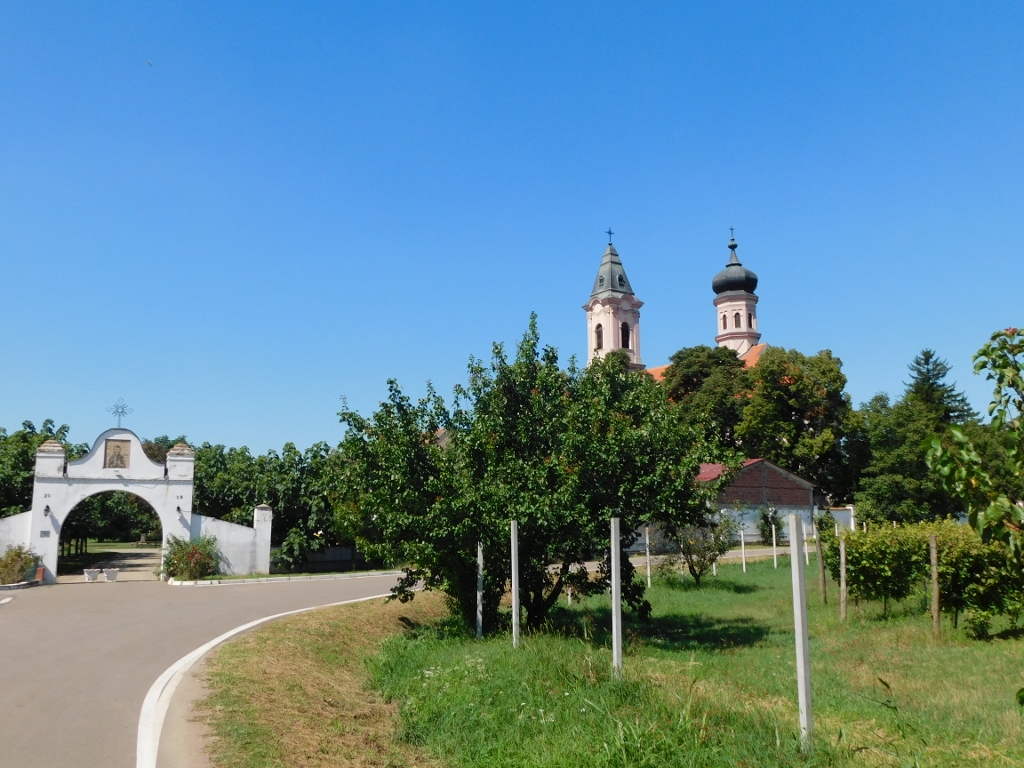 Fenek Monastery
Fenek Monastery
According to the oral tradition, the monastery was founded by Despot Stefan Branković (1420-1476) and his wife Angelina, but the first written record of the monastery appeared in 1563. It was restored at the end of the 18th century and it was then that it got its present form.
Fenek Monastery is considered a rather important place, primarily because of its historic role. Namely, at the end of the 18th century and the beginning of the 19th century, this was the centre of the Serbian political emigration and there is a record of a meeting between Knyaz Aleksa Nenadović and Austrian Emperor Joseph II. Also, in 1813, after the failure of the First Serbian Uprising, the leader of the uprising, Karađorđe, stayed here for a short while together with his son and the entourage.
When I passed the monastery’s gate and a line of trees, I first headed for the sepulchral Chapel of St. Paraskeva of the Balkans that was built in 1800.
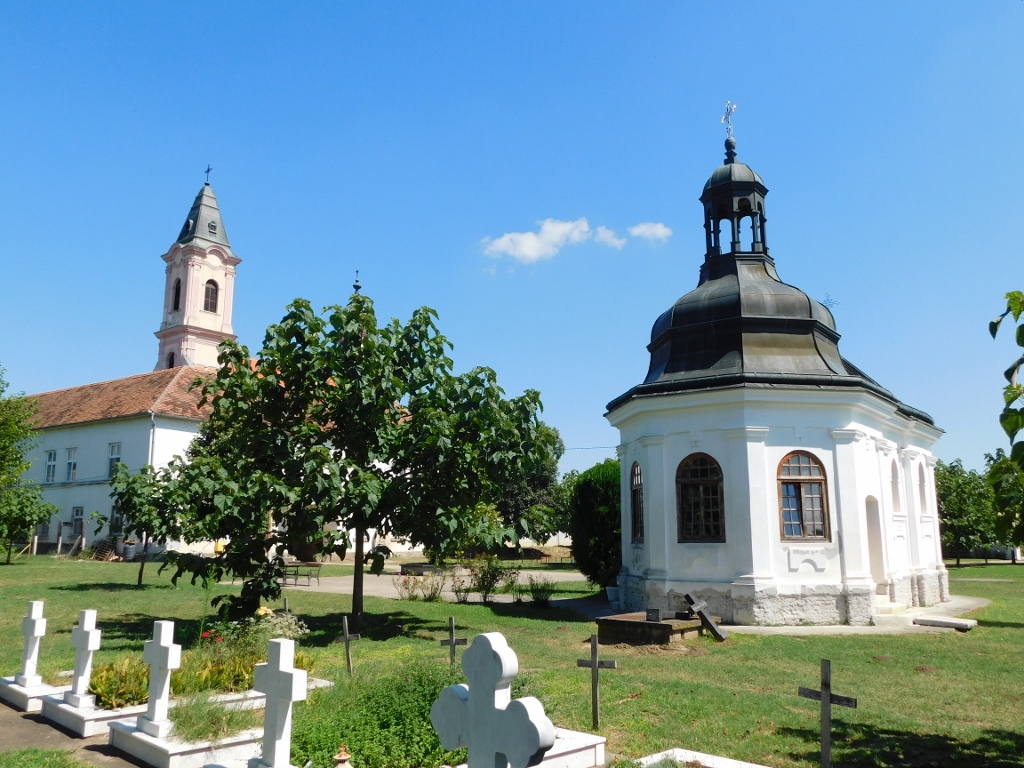 Fenek Monastery, the sepulchral chapel is to the right, while the church is to the left
Fenek Monastery, the sepulchral chapel is to the right, while the church is to the left
I briefly entered the chapel and took a photo of its modest interior, although I had an impression that the walls had been prepared for new wall paintings.
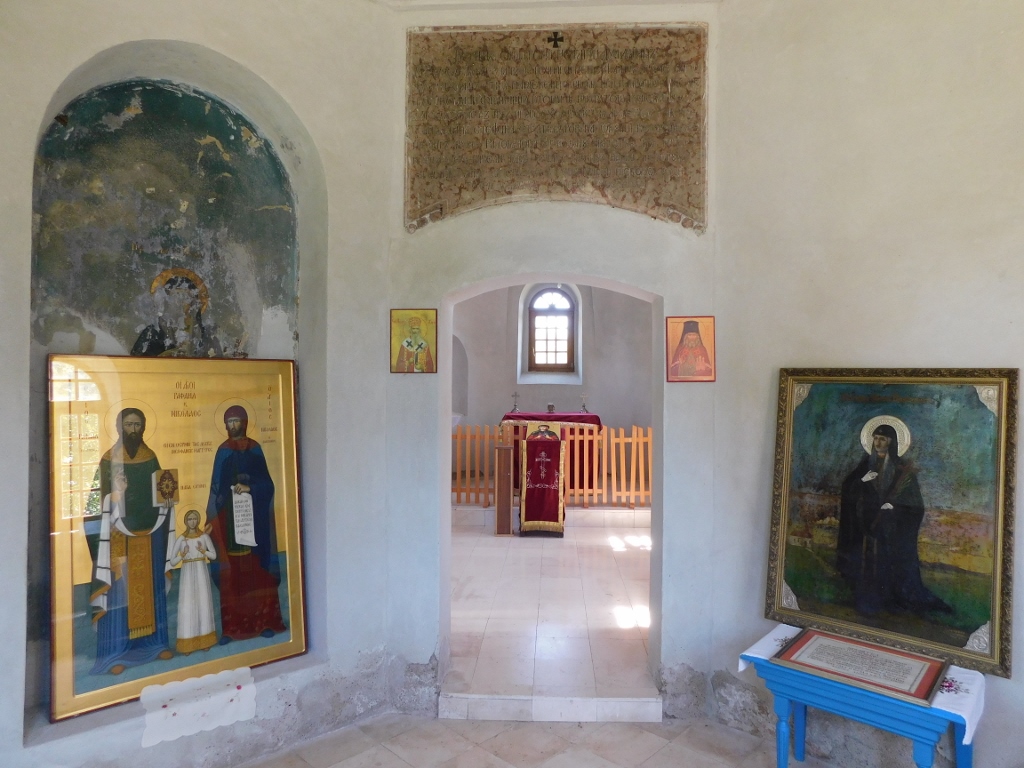 Fenek Monastery, sepulchral Chapel of St. Paraskeva of the Balkans, the interior
Fenek Monastery, sepulchral Chapel of St. Paraskeva of the Balkans, the interior
In the yard, close to the chapel, I noticed an interesting monument, although I had no idea what this was, and then I continued to the churchyard.
 Fenek Monastery, a detail
Fenek Monastery, a detail
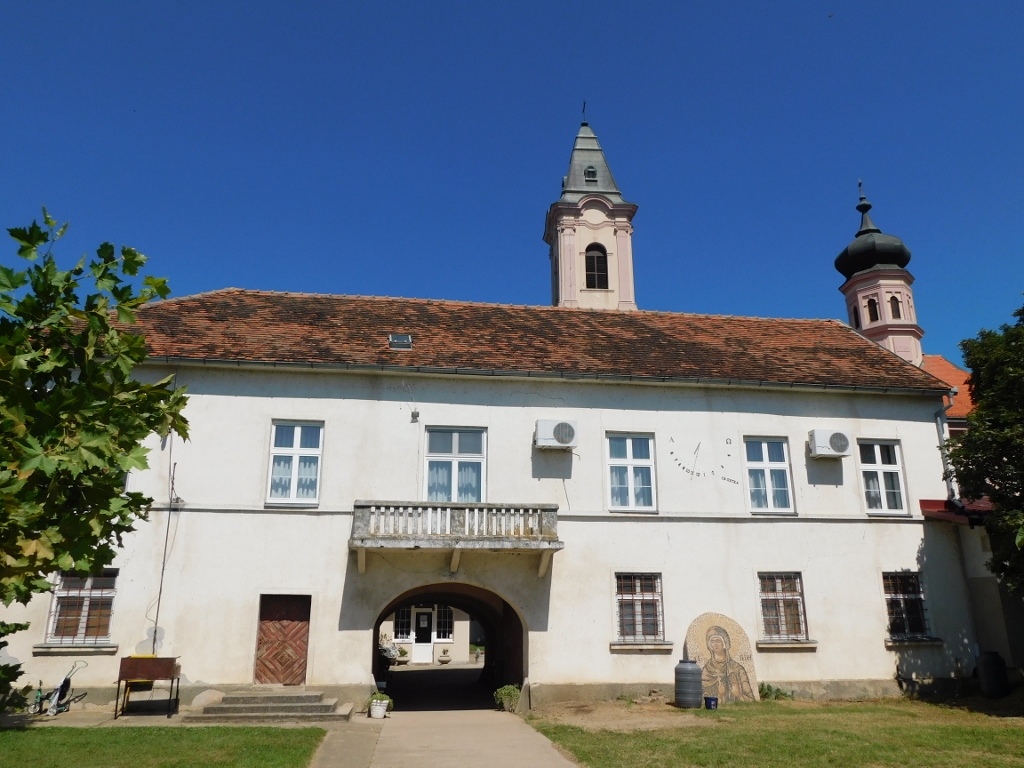 Fenek Monastery
Fenek Monastery
The monastery’s church is dedicated to St. Paraskevi of Iconium and it was conceived as a single-nave building with a semi-circular apse in the east, while a three-storey tower rises above the front facade in the west. Above the area in front of the iconostasis, there is a comparatively small dome and on the outside one can also see shallow rectangular choirs.
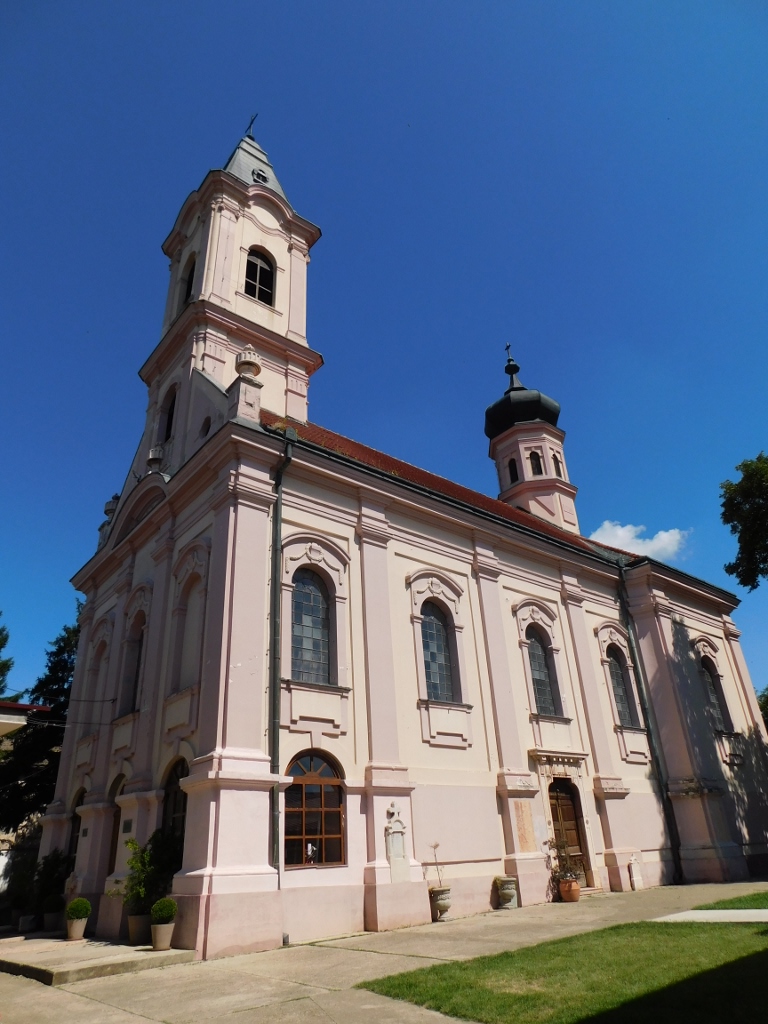 Fenek Monastery, the church
Fenek Monastery, the church
The monastery was set on fire during WWI and in WWII, in 1942, it was almost completely demolished. It was reconstructed only in 1991 and until 2006 this was the place of a sisterhood, but because of the small number of remaining nuns that were then sent to some other female monasteries, this monastery became a male monastery.
In the interior of the church you can nowadays see several different artistic styles, since most of the original iconostasis burned down in WWI and this was also when the wall paintings from 1859 were destroyed. Still, I did not mind it; the atmosphere was certainly appropriate and sublime.
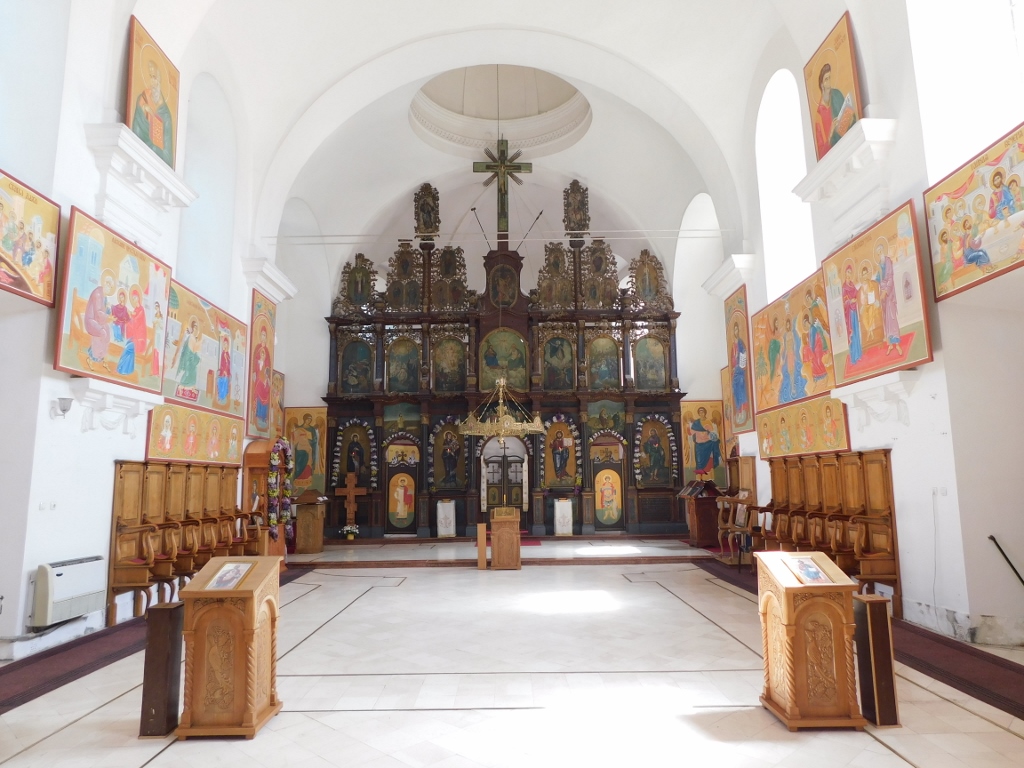 Fenek Monastery, the interior of the church
Fenek Monastery, the interior of the church
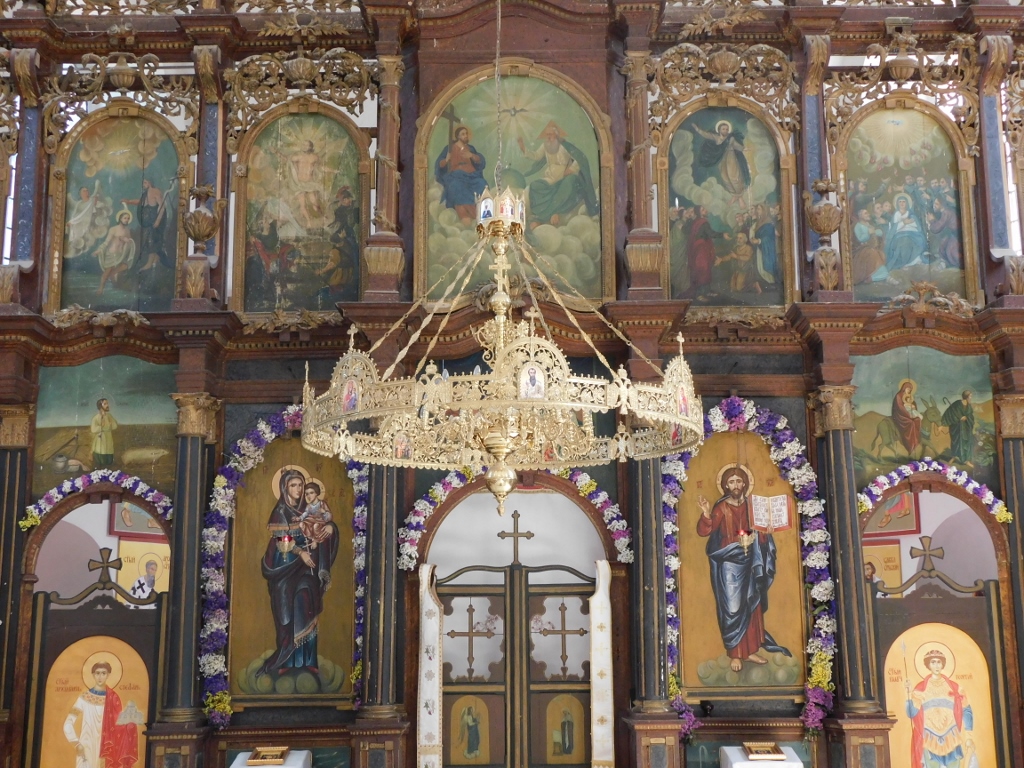 Fenek Monastery, the interior of the church, a detail
Fenek Monastery, the interior of the church, a detail
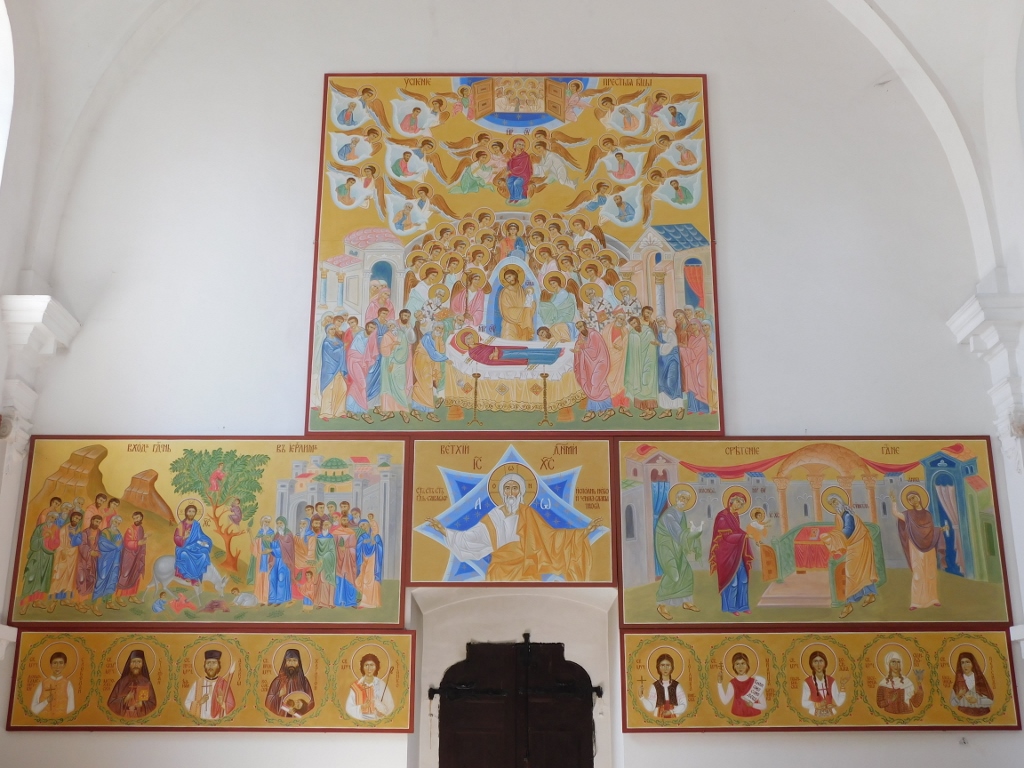 Fenek Monastery, the interior of the church, a detail
Fenek Monastery, the interior of the church, a detail
After my visit to the church, I went to the monastery’s shop where in addition to candles, icons and spiritual books, you can also find very diverse products made by the monks. This is a part of the development of the monastery which in this way also recovers from the damages and the long period of inactivity in the 20th century. I gave my modest contribution by buying a couple of bottles of wine, a couple of tinctures and some other items.
 Fenek Monastery, monastery’s shop
Fenek Monastery, monastery’s shop
Now I took these things back to my car, packed it all up nicely in the trunk and then drove to the next village which is Boljevci. I planned to go to a private museum there called “Stajkova kuća” (Stajko’s House). Admittedly, I was not sure how this would function and did not call in advance, so as it happened the gate was closed. Perhaps the owners were on summer holiday.
Be as it may, according to what I have read, the visitor can see what a typical rural house of Syrmia looked like at the beginning of the 20th century and how people used to live then. Judging by the photos I have seen on the internet, I would say that this place is worth the visit, but perhaps it is better to call in advance to make sure the place is opened. In my case, I could only take a photo of the small yard over a high metal gate.
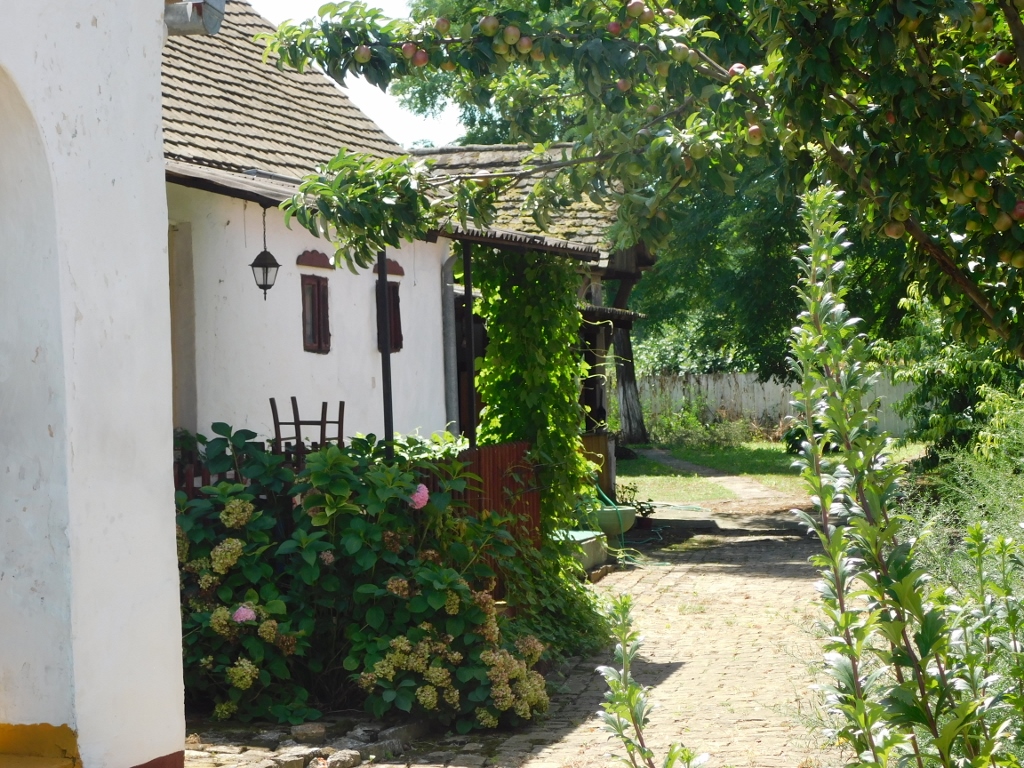 Yard of “Stajko’s House”
Yard of “Stajko’s House”
Several hundred metres farther along the main road you come to a monument of culture, the Church of Saint Paraskeva of the Balkans in Boljevci.
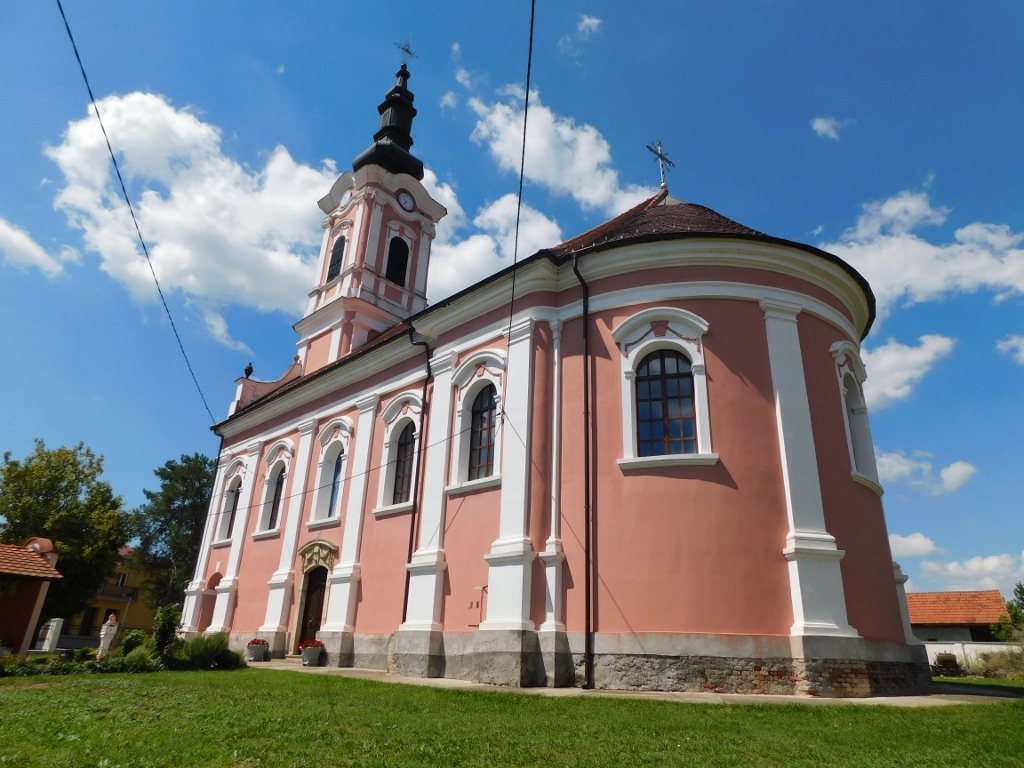 Church of Saint Paraskeva of the Balkans in Boljevci
Church of Saint Paraskeva of the Balkans in Boljevci
The church was built in 1798 and it is a single-nave edifice with a semi-circular altar apse and a tower above the narthex, with shallow rectangular choirs.
In addition to the pilasters that reflect the interior organisation of the space, the facade is also dominated by large, arched windows that have a lovely decoration in the shape of a garland and that element, albeit in a somewhat changed shape, appears also together with other decorative elements above the side doors.
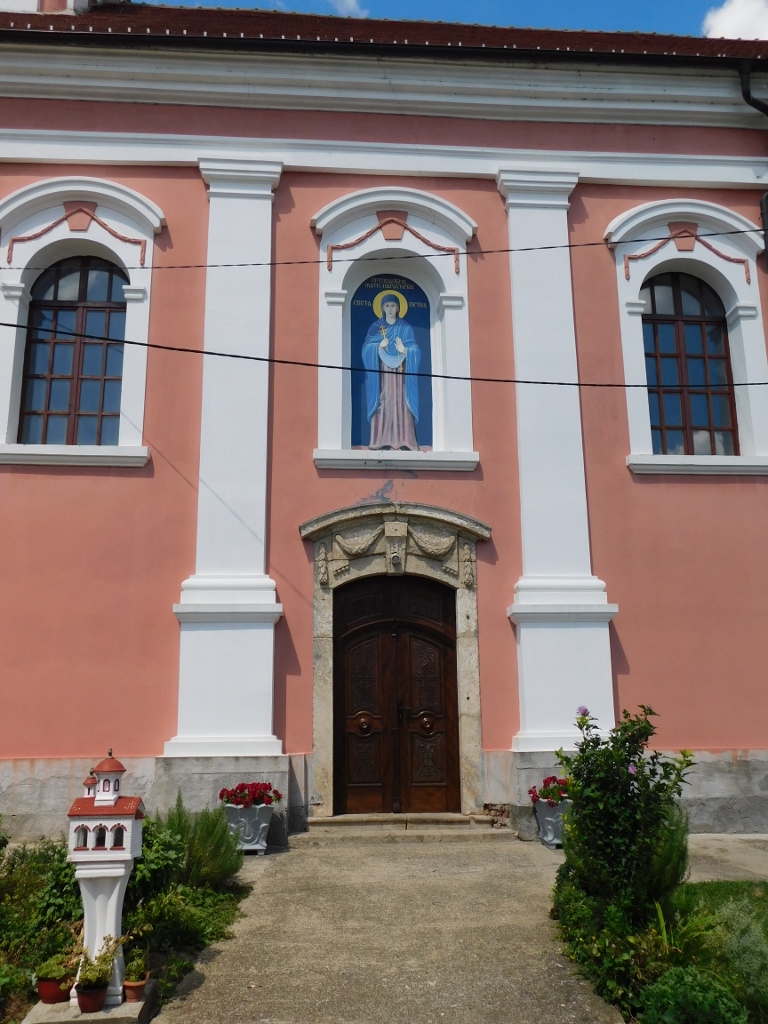 Church of Saint Paraskeva of the Balkans in Boljevci, a detail
Church of Saint Paraskeva of the Balkans in Boljevci, a detail
The iconostasis is opulently decorated with carved and gilded floral motifs, while the icons were done by an unknown 19th-century painter from Vojvodina. However, at the time of my visit, it was obvious that the works on the restoration of the iconostasis were going on, so some parts were missing. In addition, I could see that the wall paintings were also in the process of restoration. Regardless of these ongoing works, the church is very pretty on the inside as well, just as it is from the outside.
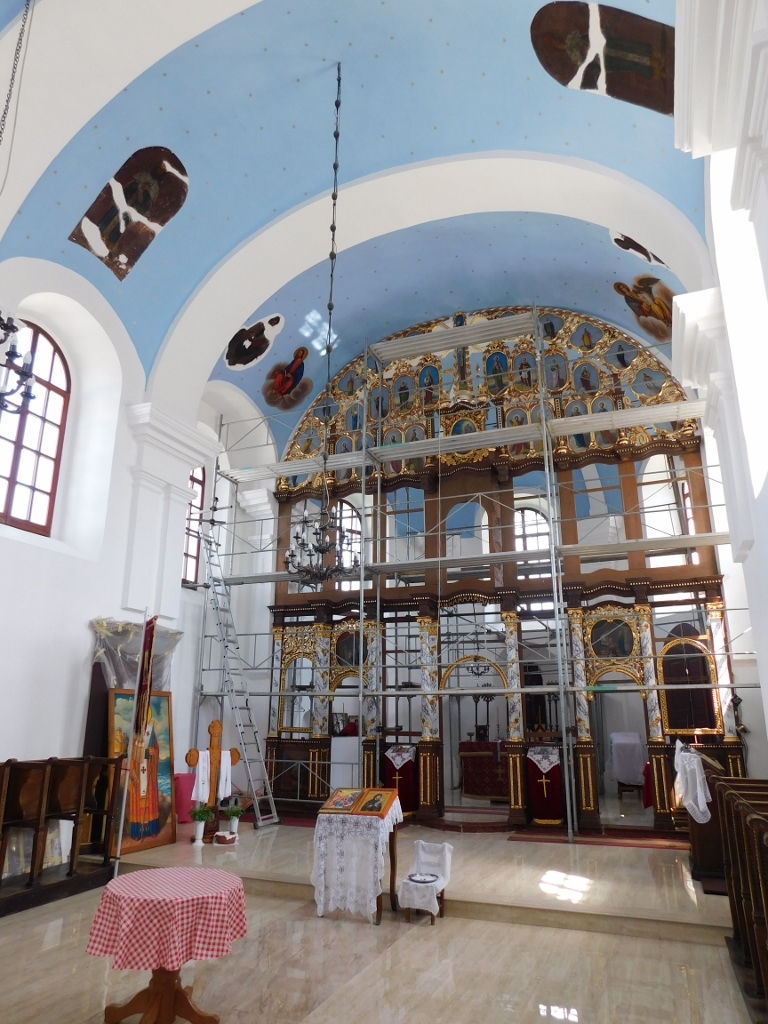 Church of Saint Paraskeva of the Balkans in Boljevci, the interior
Church of Saint Paraskeva of the Balkans in Boljevci, the interior
 Church of Saint Paraskeva of the Balkans in Boljevci, the interior, a detail
Church of Saint Paraskeva of the Balkans in Boljevci, the interior, a detail
Following my visit to the Church of Saint Paraskeva of the Balkans in Boljevci, I was quite ready to sit at some nice place and have a coffee. When I was planning this trip, I noticed that along the road to village Progar there is small Živača lake which is actually a remnant of a former meander of the Sava river that flows not far from this area I was driving through by my car. Moreover, there is a Nautical Village “Biser” in Boljevci, on the bank of the Sava, that I have not visited myself, but I have heard about it from several people. According to what I have gathered, there is a possibility to rent a stationary raft with accommodation, just like one would rent an apartment on the seaside. A little farther away, in Progar, there is “Tarzan plaža” (Tarzan Beach), also on the bank of the Sava, that I have read nice comments about as well.
But, my day’s trip around the west parts of Belgrade did not include the Sava. However, using an internet map, I did find a restaurant on the bank of Živača lake. I had problems finding it actually and when I did, it turned out that the restaurant was no longer operational. I came across a man who was gathering the grass he had just cut, so I asked him what this was all about and if I could take some photos. He did not mind at all and we started chatting, so I told him I was really quite keen on having a coffee there because there was such a lovely view, but, alas, I would not be able to.
And then, like a true gentleman, he said he would make me a coffee, I just needed to say the word. I felt a little uncomfortable, but not sufficiently so to refuse his kind offer. While he went to make me coffee, I started to take photos of the lake and some of its details.
 Živača lake
Živača lake
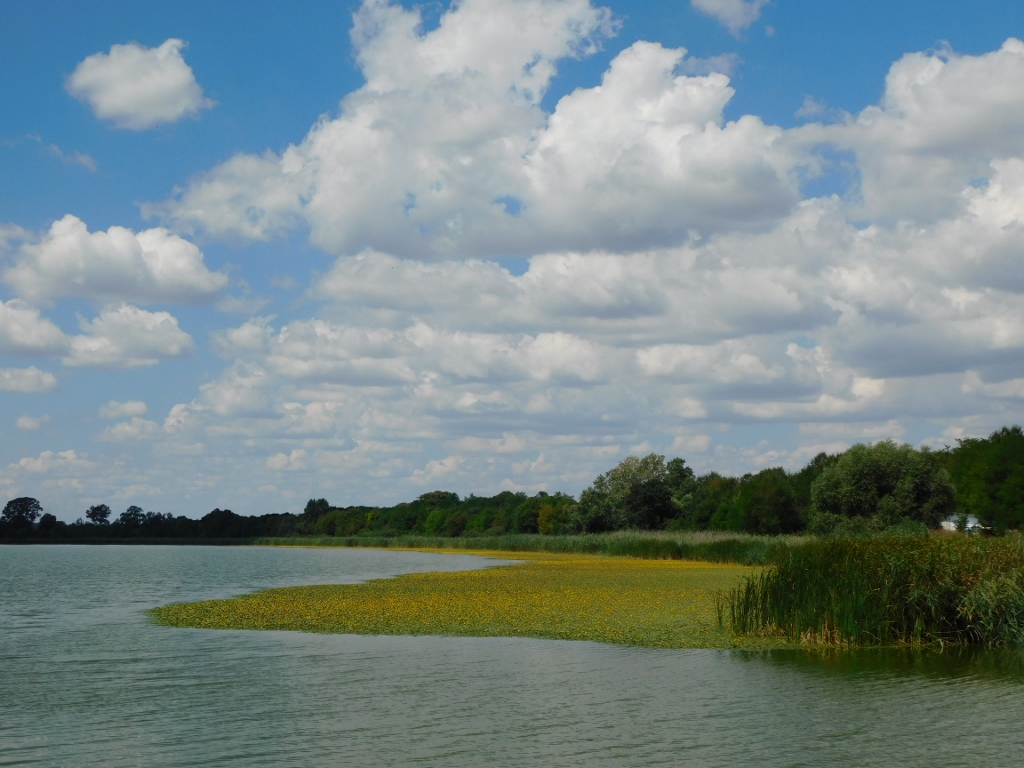 Živača lake
Živača lake
And then I sat at a table that was standing of a terrace of a kind with a wonderful view and waited for my coffee and the host. He had told me that he had already had his morning coffee which was the only one for him during a day, so he went to make just coffee for me. And that was truly very kind on his part.
 Živača lake
Živača lake
Still, he did keep me company for a short while, during which we chatted nicely. It was a very pleasant and agreeable conversation, while the coffee was excellent!
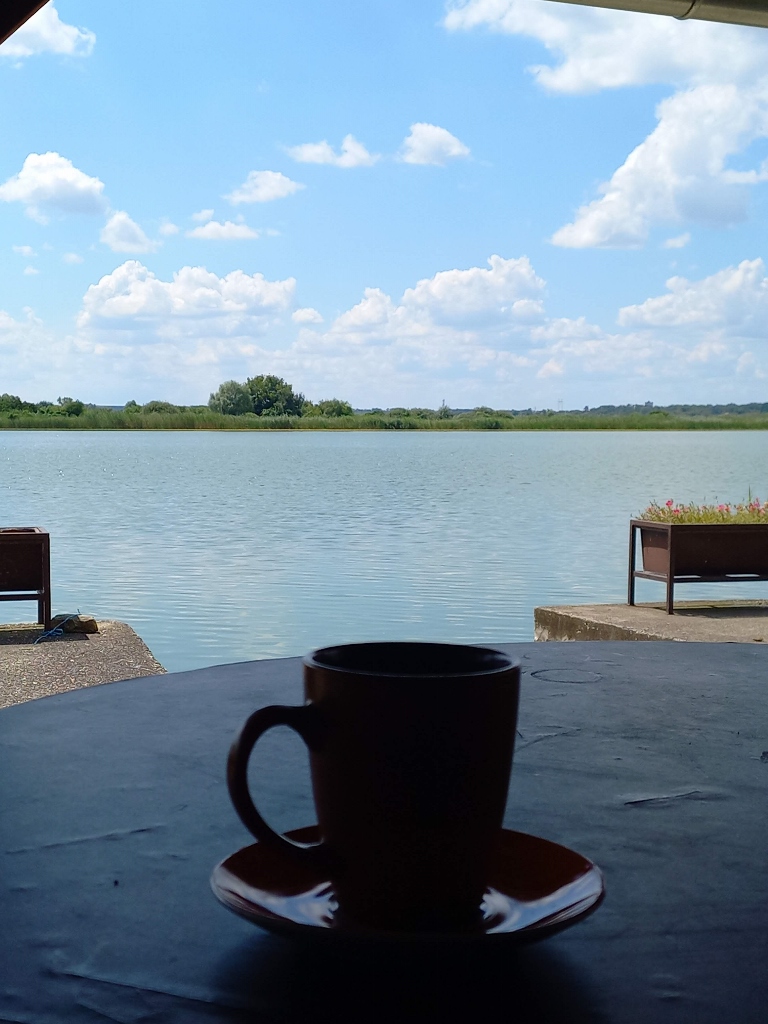 Coffee only for me
Coffee only for me
While sitting there, I was looking at the surroundings and felt very lucky that I managed to take photos of a few interesting residents of this area. For instance, a grass snake (Natrix natrix) that was swimming across the lake, a dragonfly, as well as a couple of birds – a whiskered tern (Chlidonias hybrida) and a young great crested grebe (Podiceps cristatus).
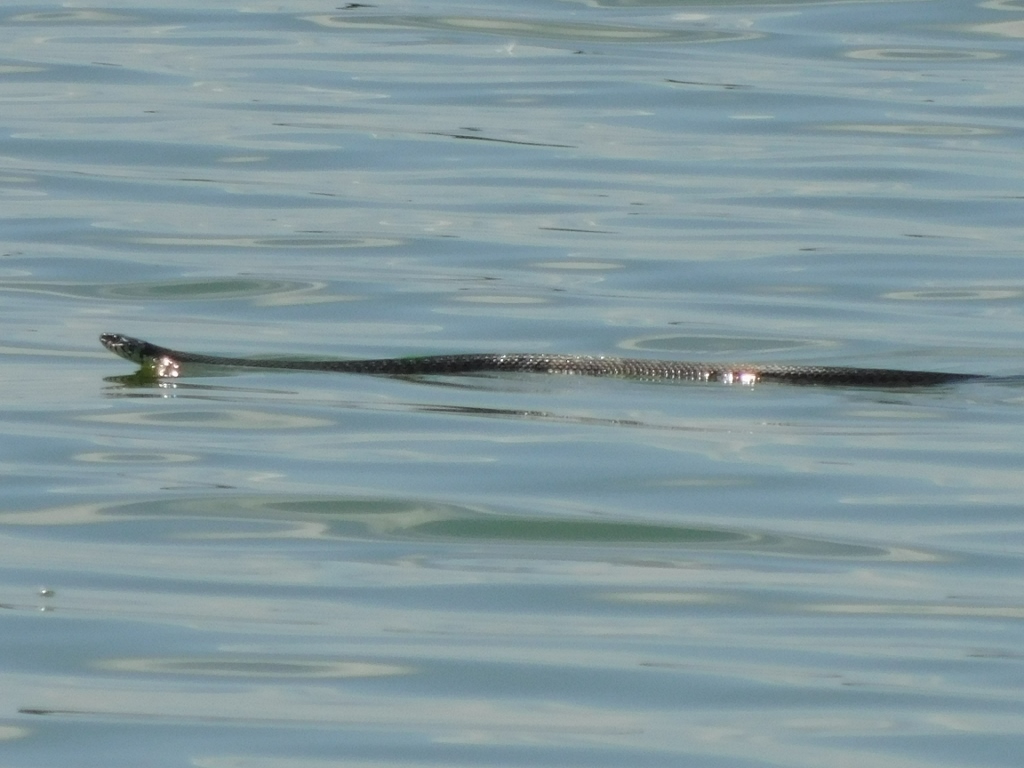 Grass snake
Grass snake
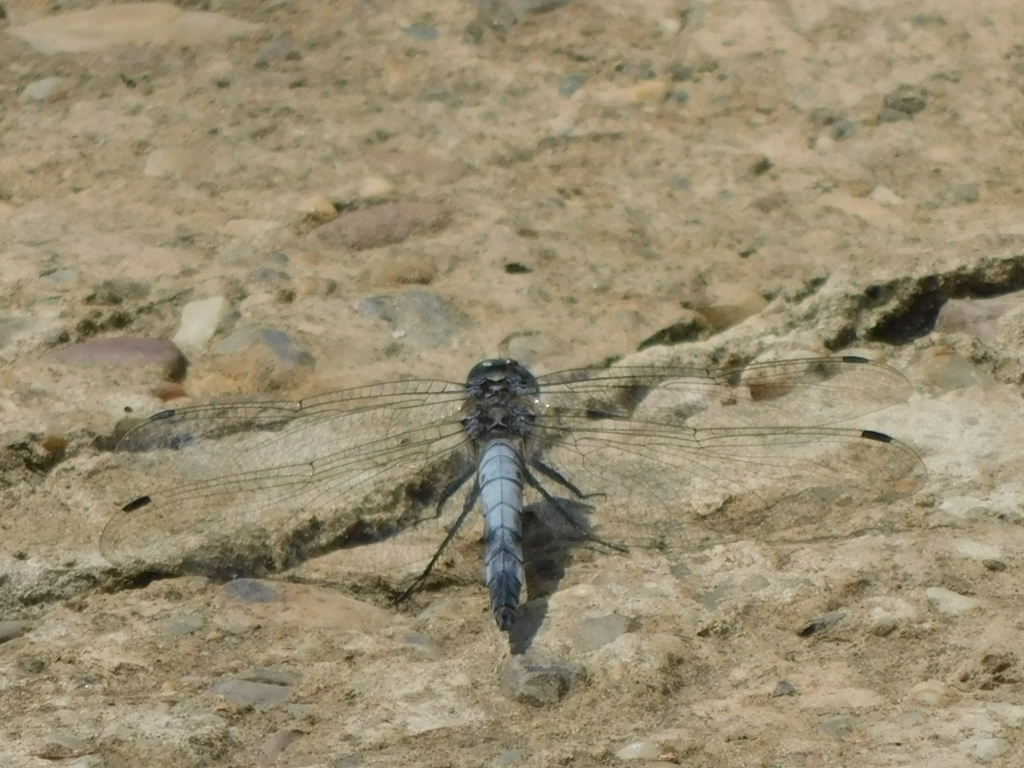 Dragonfly
Dragonfly
 Whiskered tern and a young great crested grebe
Whiskered tern and a young great crested grebe
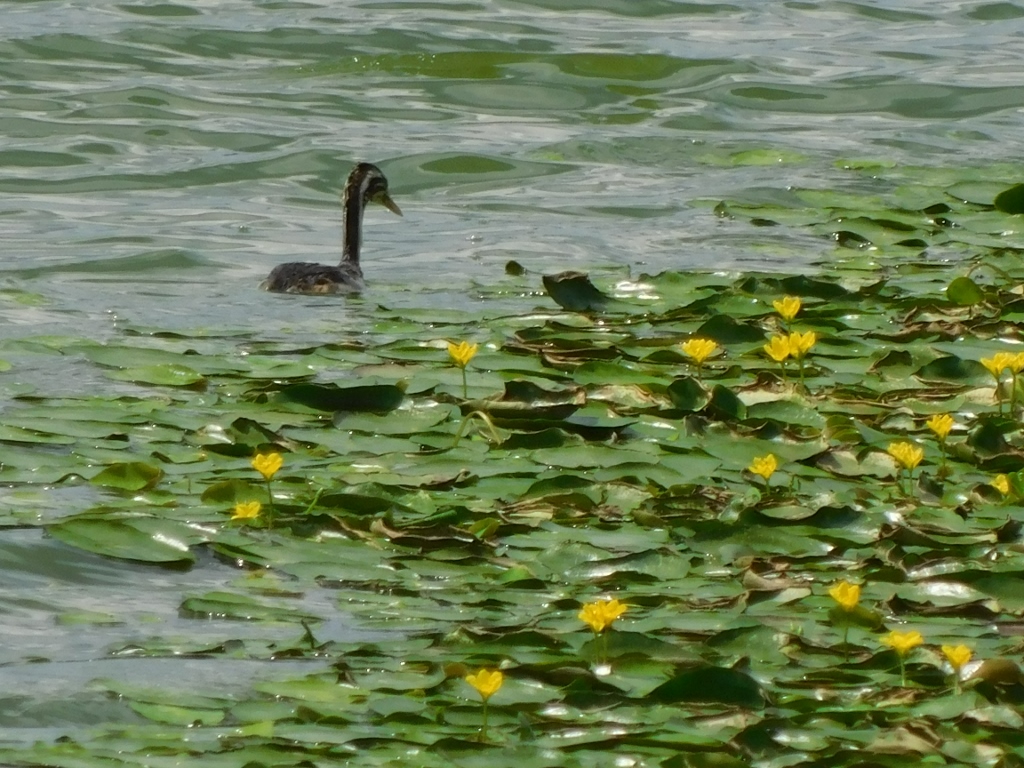 Young great crested grebe
Young great crested grebe
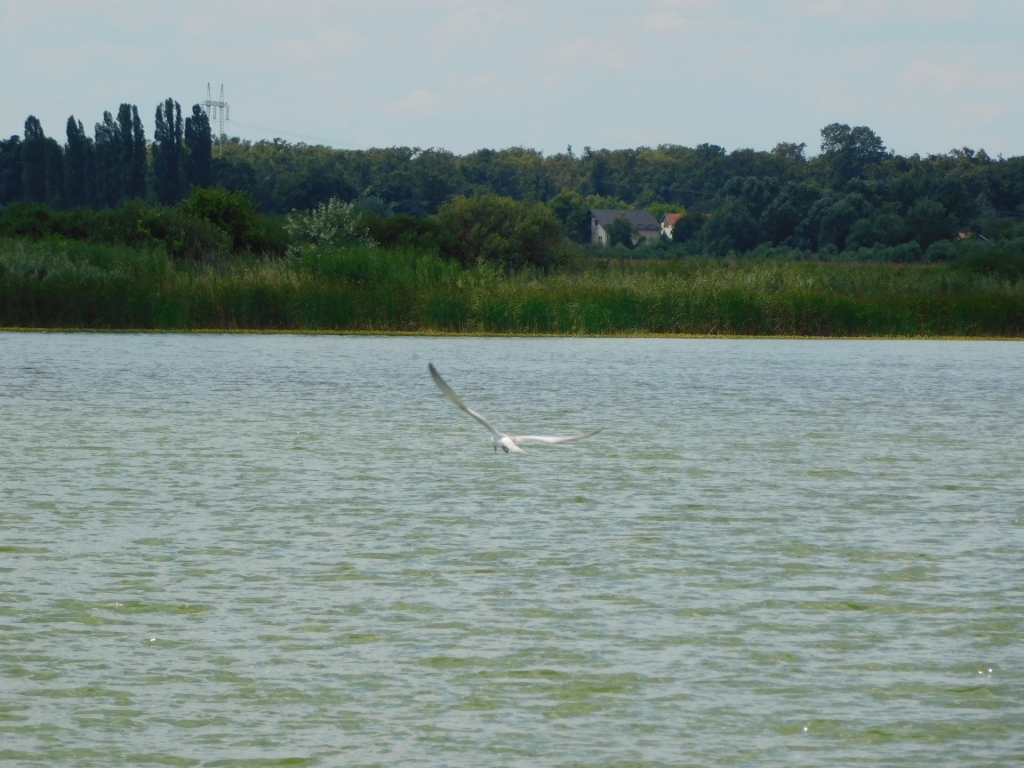 Whiskered tern
Whiskered tern
I did have problems trying to take photos of the flying tern and this is reflected on their quality, but in turn the small flowers of yellow water-lilies (Nuphar lutea) posed without moving.
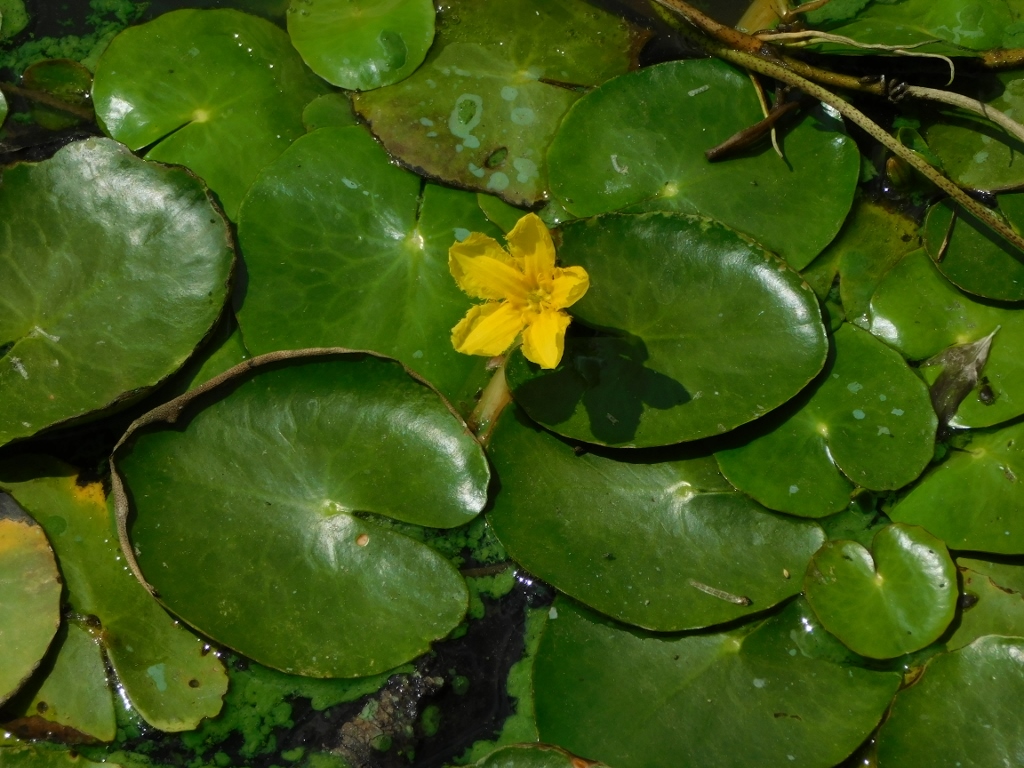 Yellow water-lily
Yellow water-lily
I also took a photo of a nearby building which had been, as my host told me, built by Austro-Hungarians who used it as an observation tower. I think this was also the place where he made my coffee.
 Observation tower by Živača lake
Observation tower by Živača lake
Close to this lake I was actually going to look for an archaeological site, “Progarski vinogradi,” where artefacts from the Roman period had been found, as well as a necropolis from the 14th to the 16th century. However, apart from some general information found on the internet, I could not find anything else and even less any information about where exactly this was. Perhaps it has all been already excavated or just conserved. In any case, this improvised coffee break with fine conversation and seeing of some interesting animal and plant species at the bank of Živača lake was more than a good substitute.
So, I thanked my host and moved on, while he could now continue to do what he was doing when I came.
For the time being, I drove to the centre of village Progar where there is a monument of culture in the shape of the Church of Holy Archangel Gabriel.
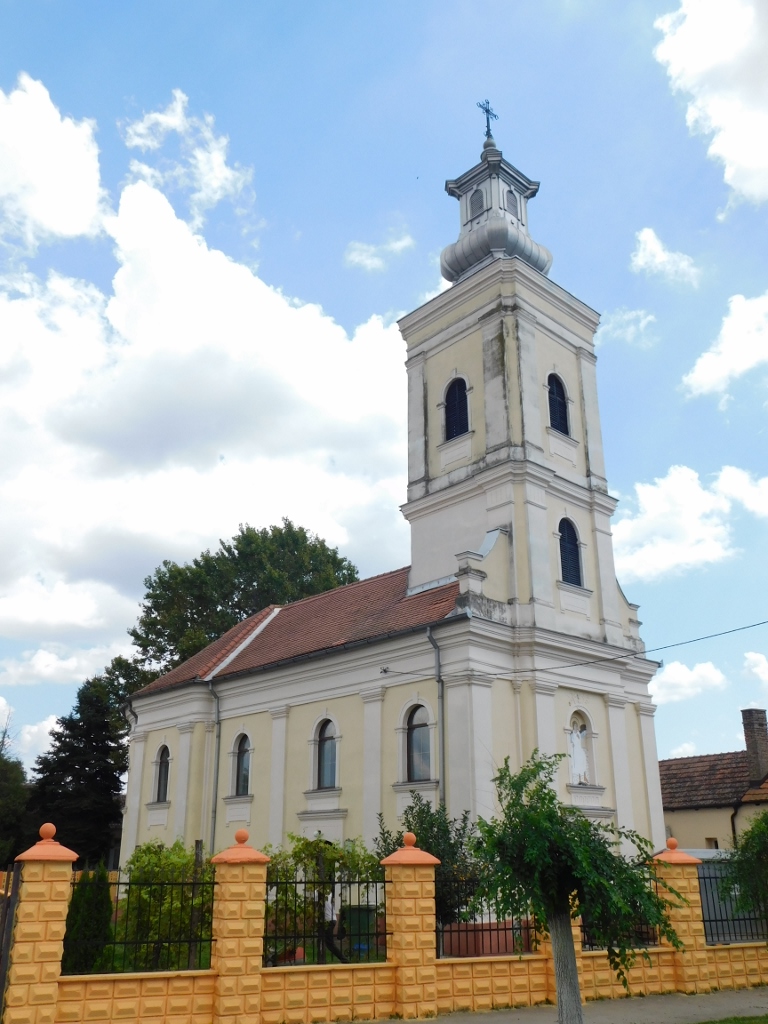 Church of Holy Archangel Gabriel in Progar
Church of Holy Archangel Gabriel in Progar
The church was built in 1789 and with its ground plan it follows the other churches I visited during this trip – in the east there is a semi-circular altar apse, while on the west side, above the narthex, rises a tower. It went through the 19th century in its original form, but in the 20th century, during WWII, it was mined and blown up by the Germans. On that occasion it was seriously damaged and its iconostasis with the icons was demolished, with only two icons from the first half of the 19th century surviving. The church was rehabilitated and reconstructed in 1970.
Its interior is rather subdued, but very pretty, including also various details that caught my attention.
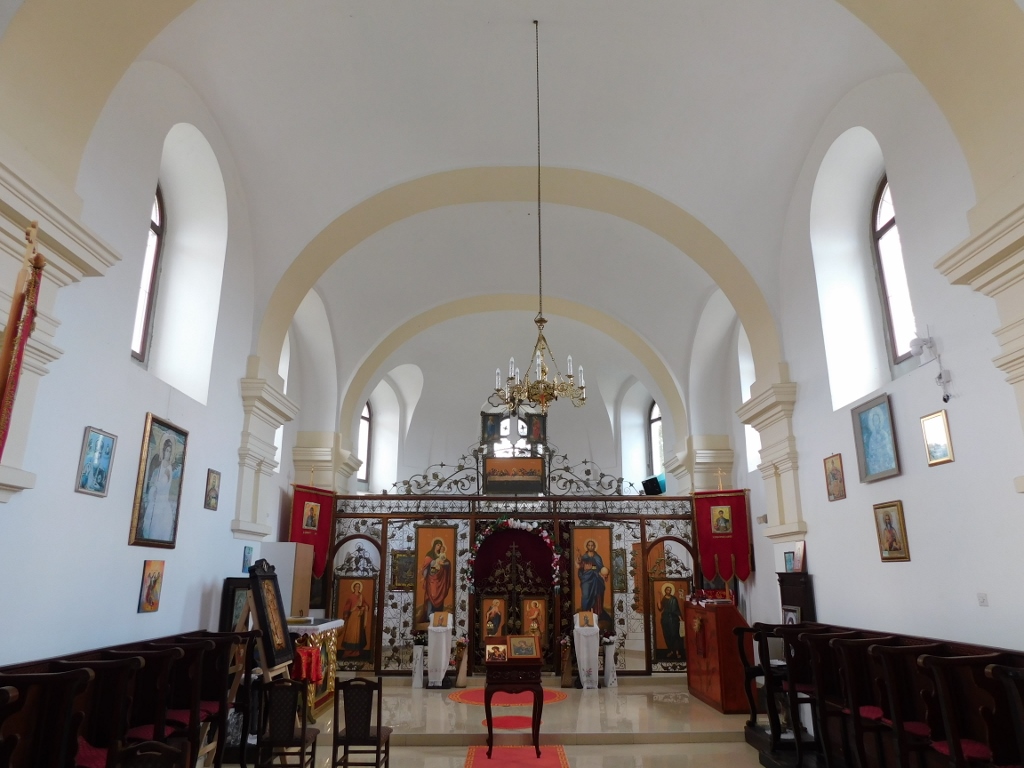 Church of Holy Archangel Gabriel in Progar, the interior
Church of Holy Archangel Gabriel in Progar, the interior
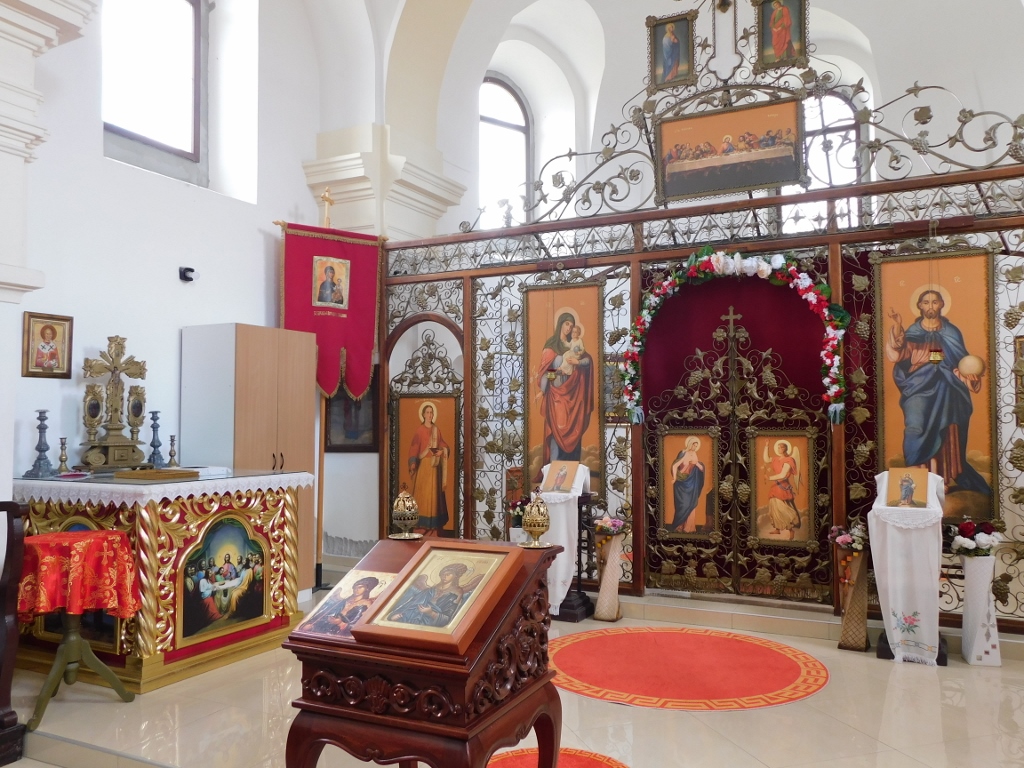 Church of Holy Archangel Gabriel in Progar, the interior, a detail
Church of Holy Archangel Gabriel in Progar, the interior, a detail
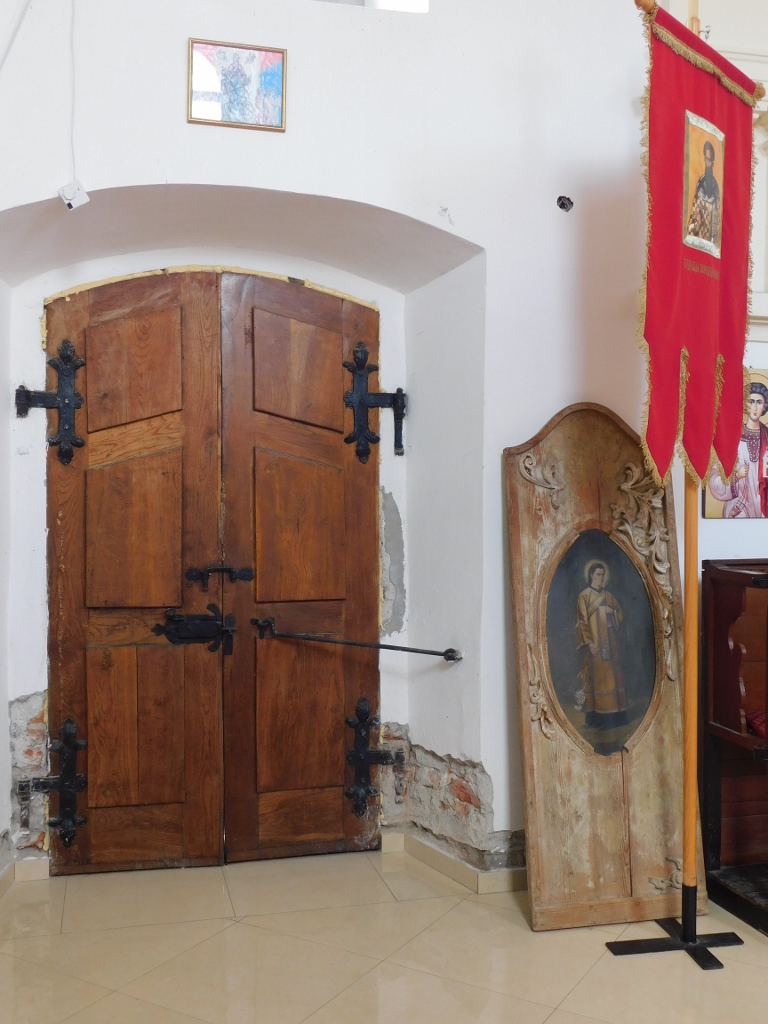 Church of Holy Archangel Gabriel in Progar, the interior, a detail
Church of Holy Archangel Gabriel in Progar, the interior, a detail
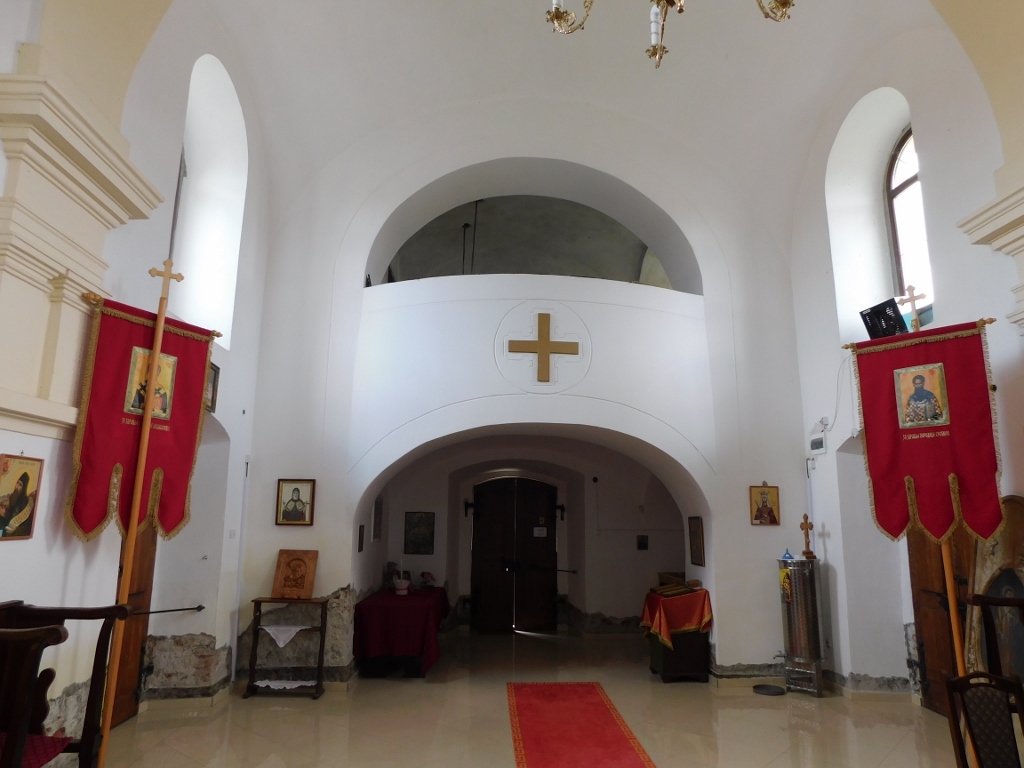 Church of Holy Archangel Gabriel in Progar, the interior
Church of Holy Archangel Gabriel in Progar, the interior
Once I had finished with my sightseeing of this church as well, I went back the same way I came here, since some 1.5 km from the centre of Progar, in the direction of Boljevci, there is Bojčinska šuma (Bojčin Forest) that is categorised as a landmark.
Although I had an intention of taking a walk around the forest, I first went to a traditional restaurant that exists here. I remember that, as a child, I used to come here relatively often with my parents and my brother, because I think a friend of my dad’s opened this restaurant. In any case, I can still recall what my favourite dish at the time was, but this time around it was not on the menu, so I took ćevapi, with kaymak, instead. I can report right away that I ate it all, even the salad that cannot be seen in the photo.
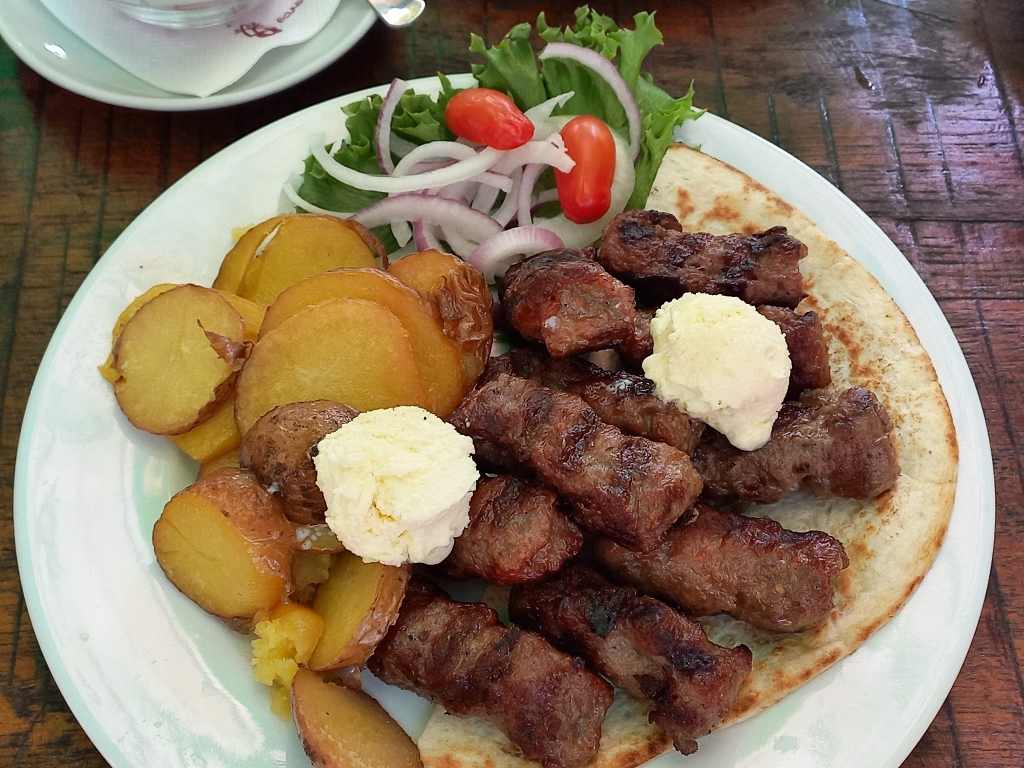 Lunch in Bojčin Forest
Lunch in Bojčin Forest
Since I’m recalling my childhood and the food I loved, let me just mention that a shrub with still insufficiently ripe Cornelian cherries (Cornus mas) that I saw here reminded me of the jam which my grandmother Stajka, my mom’s mom, used to make especially for me. Once, as an adult, I wanted to make the jam myself and I was quite surprised to see in the recipe that it is not cooked at all, but rather, after the preparation of the fruit, it needs to be stirred for a couple of hours. My grandmother really loved me a lot.
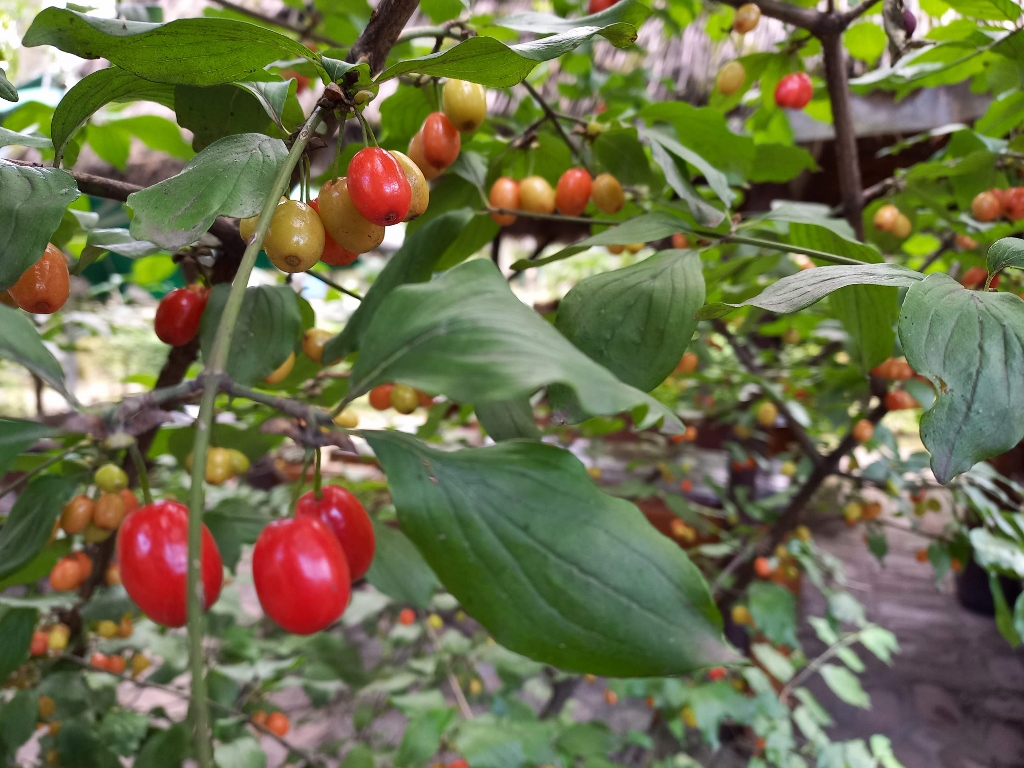 Cornelian cherries in Bojčin Forest
Cornelian cherries in Bojčin Forest
And after this nice lunch break, I finally went for a walk. Bojčin Forest is situated on the territory of the village of Progar and it is actually categorised both as a protected natural monument and as a landmark in terms of an immovable cultural property. Its surface is a little over 600 hectares. There is also a circular trim trail or obstacle course made here, with the length of around 2 km, so I decided to go there for a walk. Each moment spent in nature is good and it is especially good when you go for a walk after a good meal.
 Trim trail in Bojčin Forest
Trim trail in Bojčin Forest
 Trim trail in Bojčin Forest
Trim trail in Bojčin Forest
Along the trail there are 16 points where the visitors can do different exercises, with suggestions about what is recommended for beginners and what is recommended for advanced visitors. With my stomach full after the lunch, I only took photos.
 Trim trail in Bojčin Forest, a detail
Trim trail in Bojčin Forest, a detail
 Trim trail in Bojčin Forest, a detail
Trim trail in Bojčin Forest, a detail
Before starting with my walk, I asked the waiter at the restaurant where the pigsty for mangalica pigs was, since this place is often mentioned. This is a Hungarian breed of domestic pigs that have recently become very popular in Serbia. By the way, one can also eat specialties at the restaurant made of mangalica meat. The waiter explained, but also mentioned that at this time of the day, the mangalicas are let into the forest, which I interpreted as a sure sign I would not be able to see them. And then I came to a place where I rejoiced at coming across a couple of mangalicas.
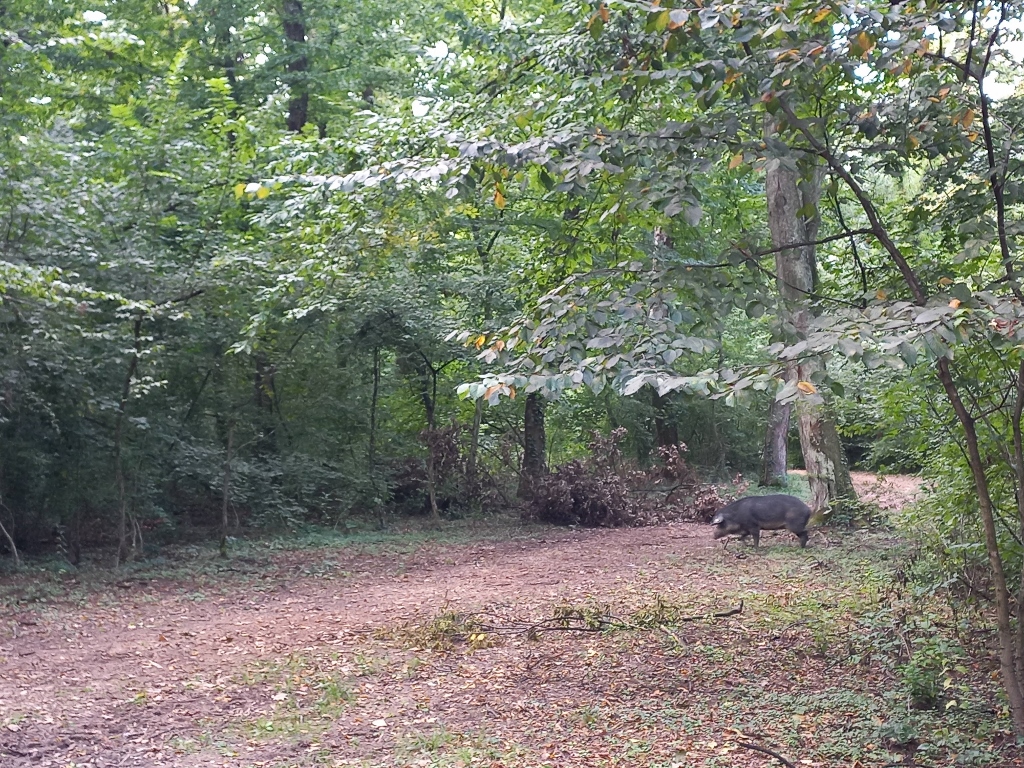 Mangalica crossing the trim trail in Bojčin Forest
Mangalica crossing the trim trail in Bojčin Forest
I took a photo of the first mangalica and even managed to turn my mobile phone to the video mode, so I made a short clip where you can see the second mangalica crossing the trail.
Very content with this encounter, I continued with my walk and when the trail turned back towards the starting point, I reached a crossroad where I saw a sign pointing to a Lipizzaner stud farm just a couple of hundred metres away. To start with, I left the forest and there I had one more unexpected encounter as well.
 Area west of Bojčin Forest
Area west of Bojčin Forest
Namely, before those two mangalicas that I took the photo and video of, I had seen a female with her offspring, but she surprised me and got into the forest quickly, so I could not take any photos of her. Meanwhile, she had apparently reached the stud farm, followed by the two mangalicas that I did film. They had obviously come here in order to steal some food from the horses, but two guys who were doing something at the farm chased them away and now I could take photos of them as they were returning back to the forest. They stopped for a moment, as if they wanted to pose, and then they started running towards the safe forest greenery.
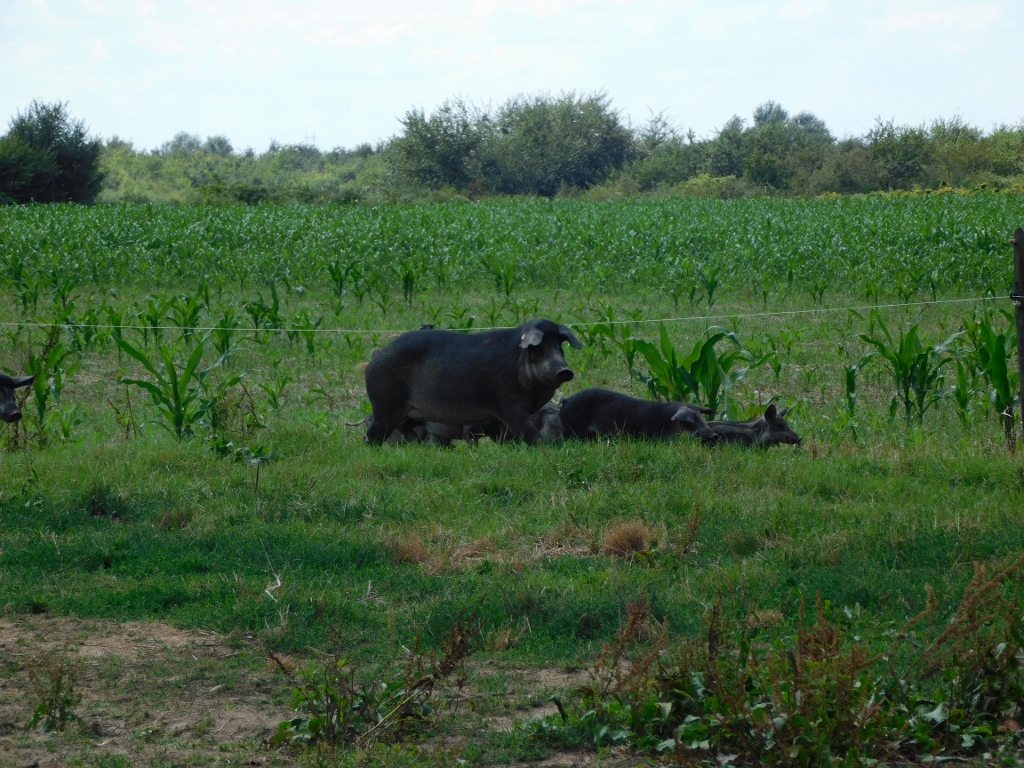 Mangalicas on their way back to Bojčin Forest
Mangalicas on their way back to Bojčin Forest
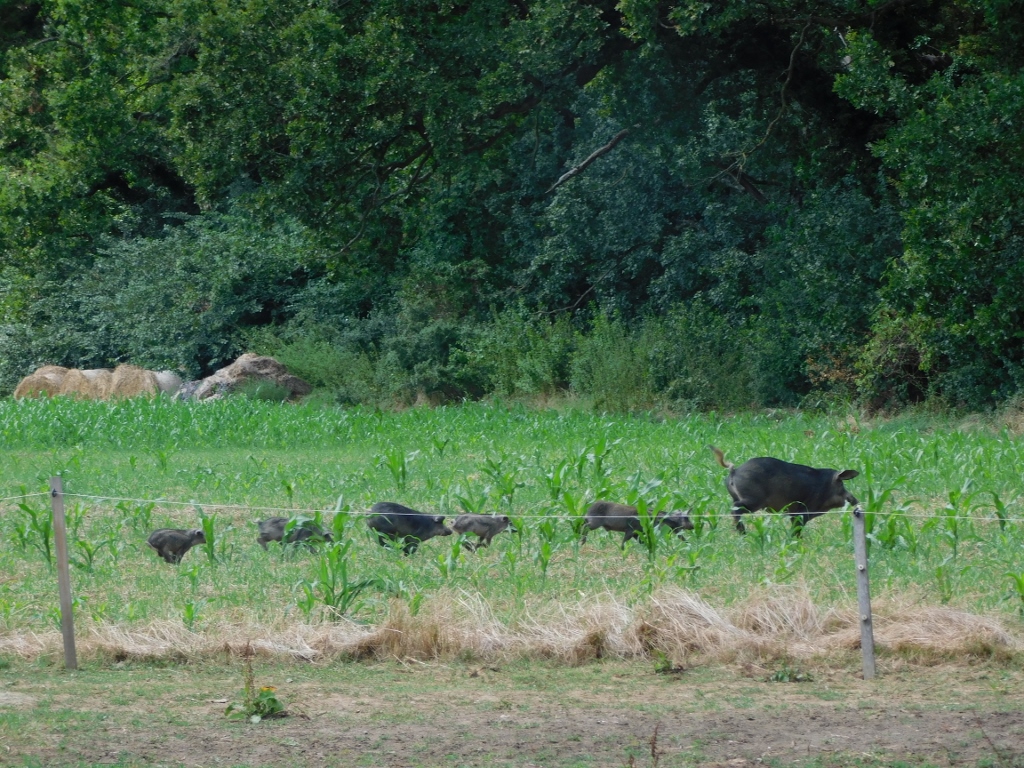 Mangalicas on their way back to Bojčin Forest
Mangalicas on their way back to Bojčin Forest
This stud farm is in fact a very modest and small place, fenced-off and envisaged for the stay of the horses, and this is probably just the beginning of its development, but the horses were certainly very beautiful.
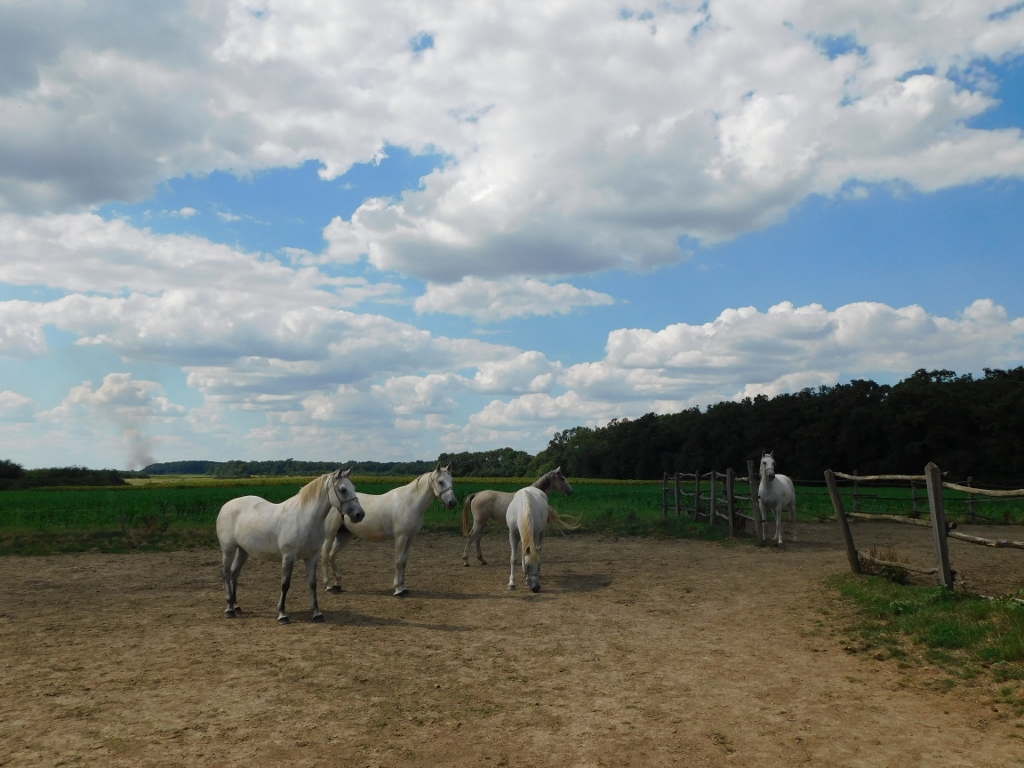 Lipizzaner stud farm
Lipizzaner stud farm
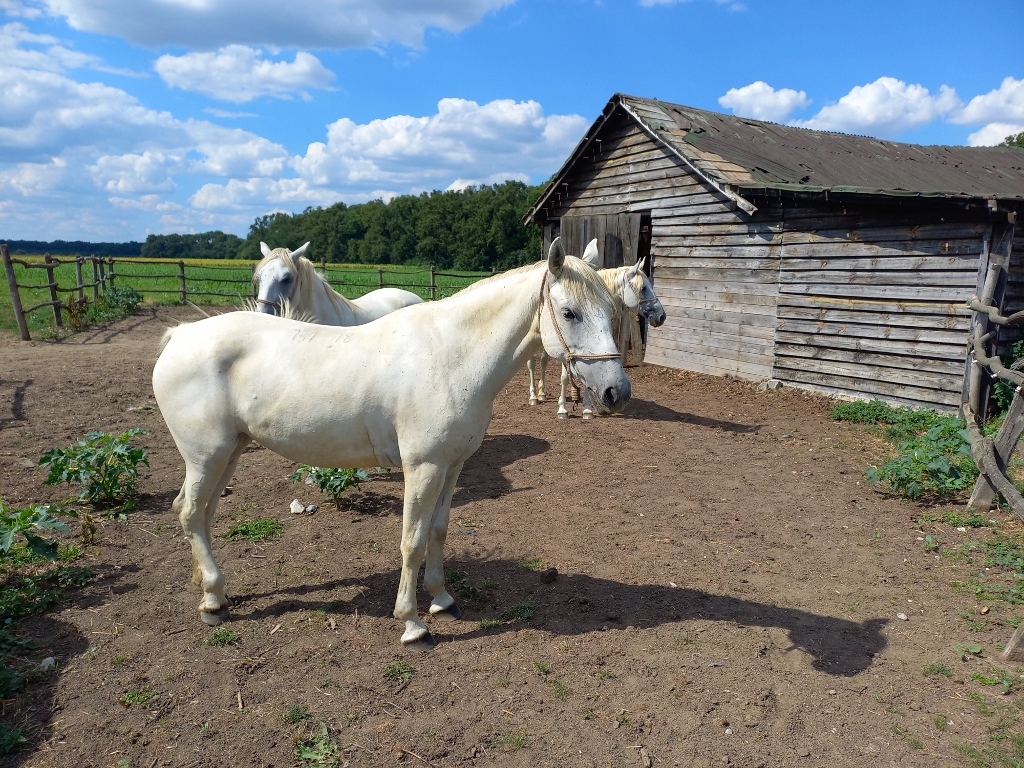 Lipizzaner stud farm
Lipizzaner stud farm
 Lipizzaner stud farm
Lipizzaner stud farm
I followed the same way that led me to the stud farm in order to get back to the forest where I continued with my stroll passing by some new points for exercising.
 Return to Bojčin Forest
Return to Bojčin Forest
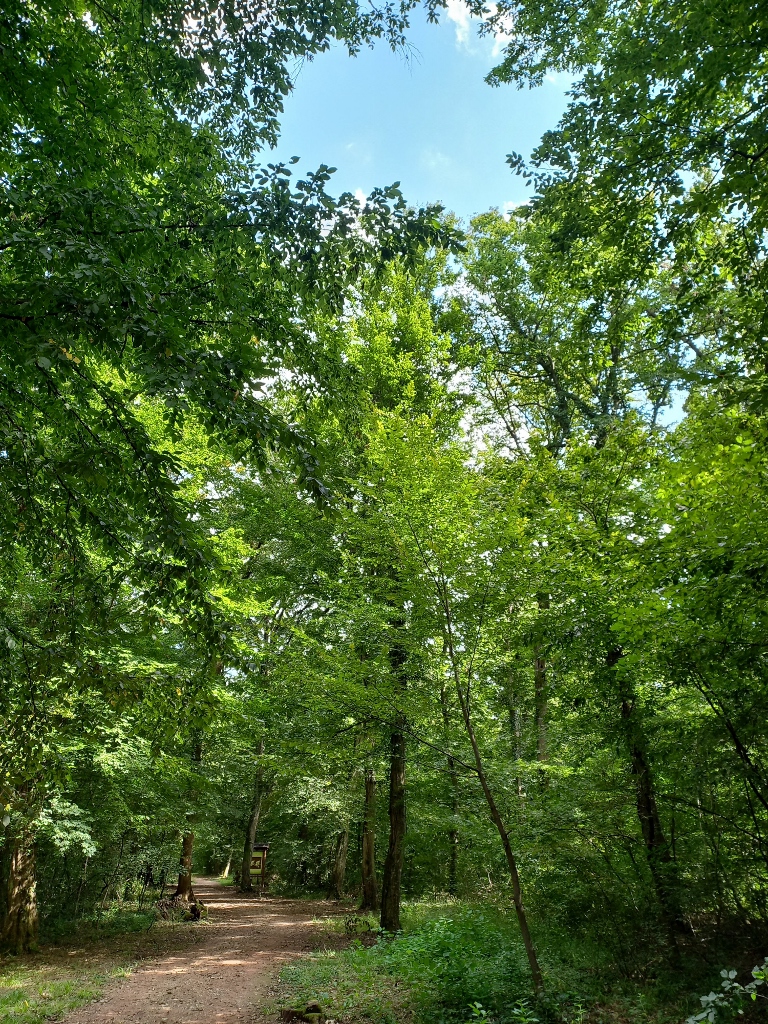 Trim trail in Bojčin Forest
Trim trail in Bojčin Forest
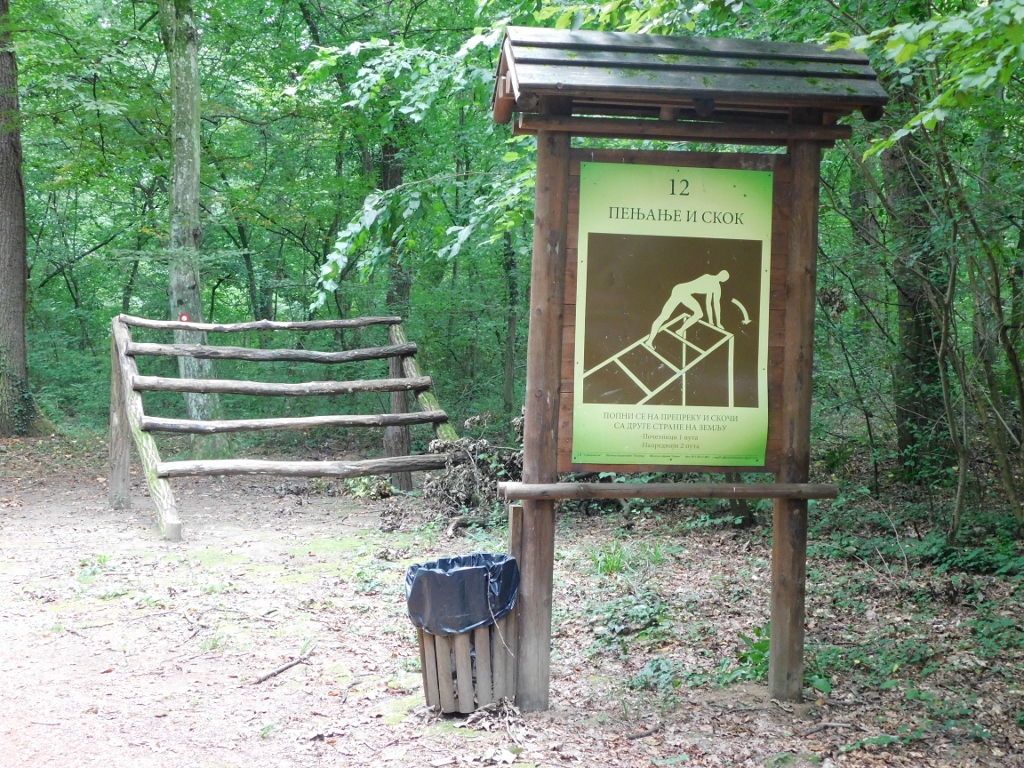 Trim trail in Bojčin Forest, a detail
Trim trail in Bojčin Forest, a detail
Other than the mangalicas, I came several times across a plant I think is called cuckoo pint (Arum maculatum). In the photo below, in addition to this plant with ripe berries, you can also see a green acorn that has fallen off one of the numerous oaks that grow here, as well as common ivy (Hedera helix).
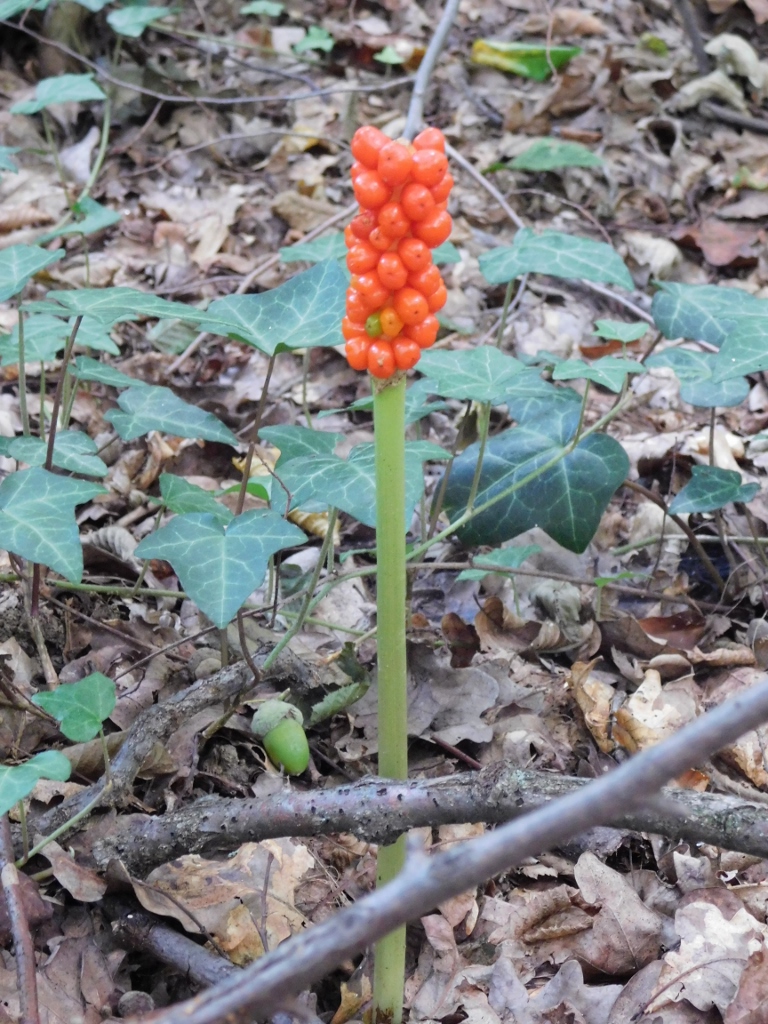 Bojčin Forest, a detail
Bojčin Forest, a detail
Soon I returned to the restaurant by which I had parked my car, but first I took a photo of a detail from a shop that is a part of the restaurant and that sells various types of processed meat. A good share of this is made precisely from the mangalicas, but at least these are free-range.
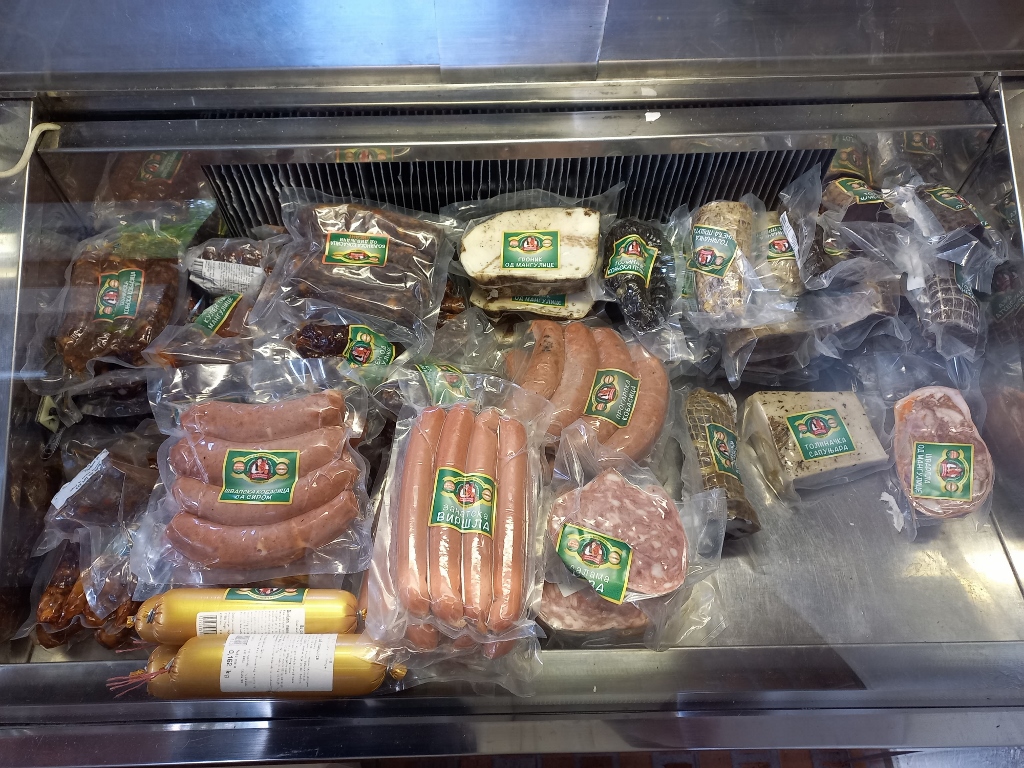 Processed meat for sale
Processed meat for sale
As I’ve mentioned, Bojčin Forest is not just a natural monument, but also an immovable cultural property. One of the reasons is that this was the place where the partisans used to hide during WWII and this was also the place where in 1942 there was the first battle between partisans and Ustashas in southeast Syrmia. Marking this event there is a monument in the middle of the forest, but I did not go that far, opting rather to visit a monument at the beginning of the forest, practically right beside the main road.
 Monument to the fighters from the National Liberation Army (the partisans)
Monument to the fighters from the National Liberation Army (the partisans)
Behind the monument, there are two structures. To the left, there is something like a huge igloo and it was not quite clear to me what it is used for, but I managed to peep into it through a door and take a photo of it. Apparently, this is a storage space with a bar.
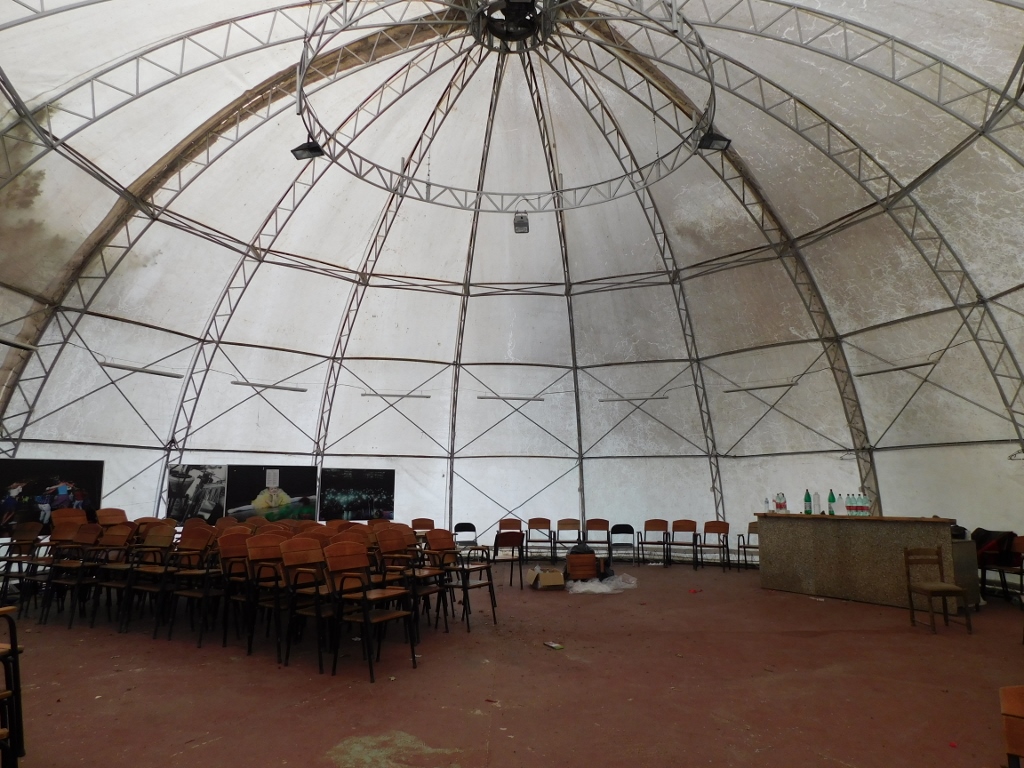 Structure at the beginning of Bojčin Forest
Structure at the beginning of Bojčin Forest
Right next to it there is a covered summer stage used for “Bojčin Cultural Summer” that is organised every year and includes various concerts.
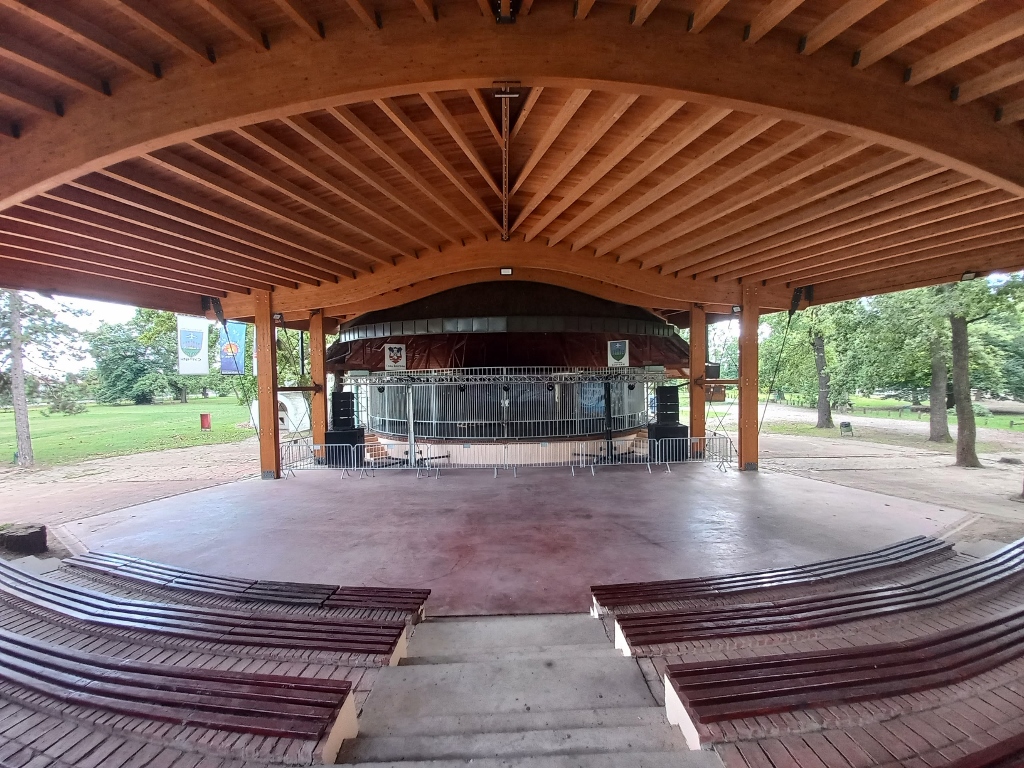 Covered summer stage
Covered summer stage
Now I got back into my car and drove north towards the village of Bečmen. Along the way I passed by some impressive sunflower fields. As the growing season was coming to its end, the sunflowers no longer looked at the sun, but rather “turned their backs” to it. And the sights were spectacular! Luckily, there were practically no other cars on the road, so I could easily stop for a short while and take photos without bothering anybody.
 We look at the sun no more
We look at the sun no more
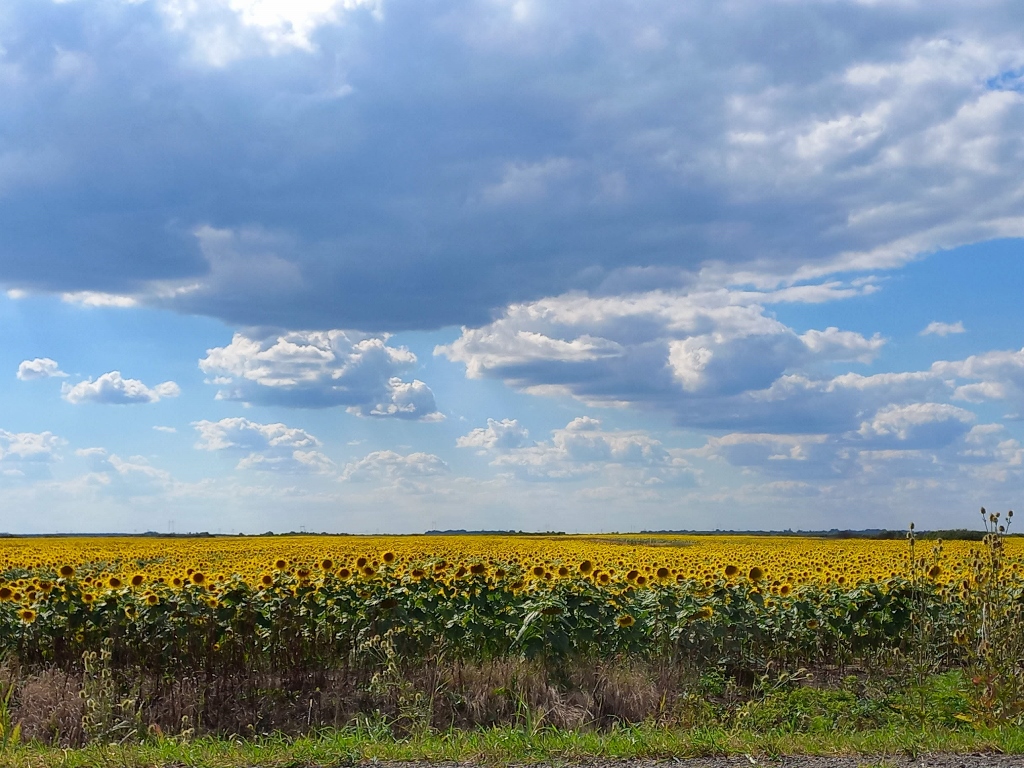 Sunflower fields in Syrmia
Sunflower fields in Syrmia
 Van Gogh would be so envious
Van Gogh would be so envious
Once in Bečmen, I drove to the Church of St. Sava that is a monument of culture. This relatively small building has a single nave, a semi-circular apse on the east side and a three-storey bell-tower on the west.
 Church of St. Sava in Bečmen
Church of St. Sava in Bečmen
 Church of St. Sava in Bečmen, a detail from the churchyard
Church of St. Sava in Bečmen, a detail from the churchyard
The church was built in 1845 and is dedicated to Saint Sava, first Archbishop of the autocephalous Serbian Orthodox Church.
At the time of my visit, it was clear that there was an ongoing restoration, but irrespective of this, it was a very nice place.
 Church of St. Sava in Bečmen, the interior
Church of St. Sava in Bečmen, the interior
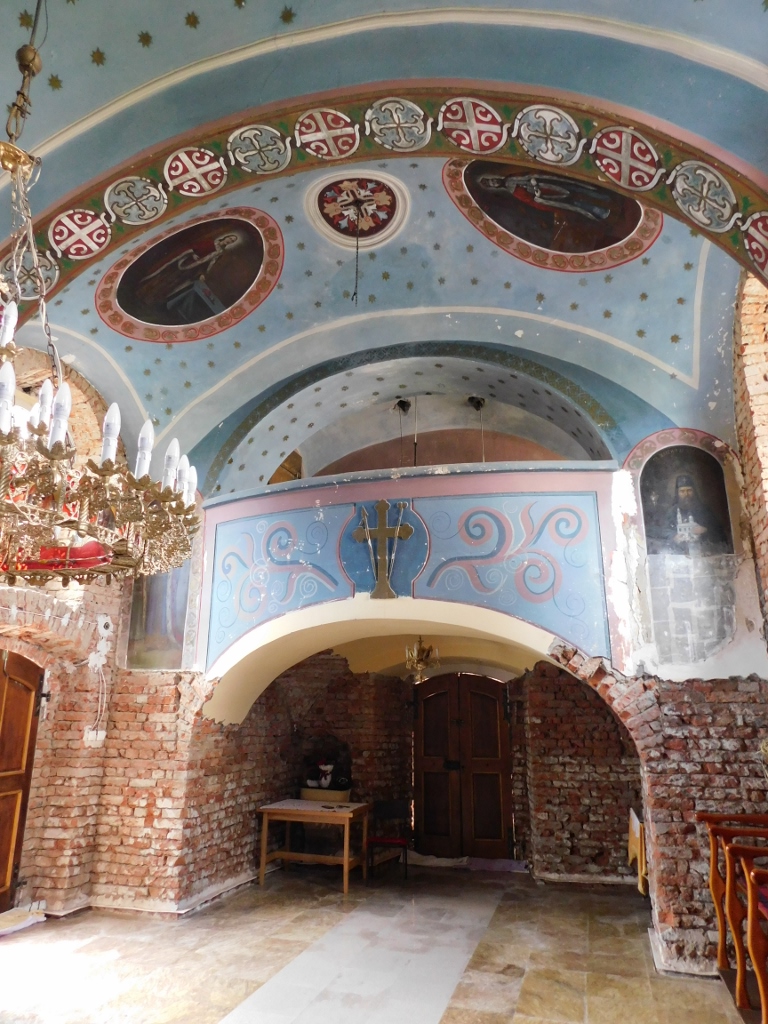 Church of St. Sava in Bečmen, the interior
Church of St. Sava in Bečmen, the interior
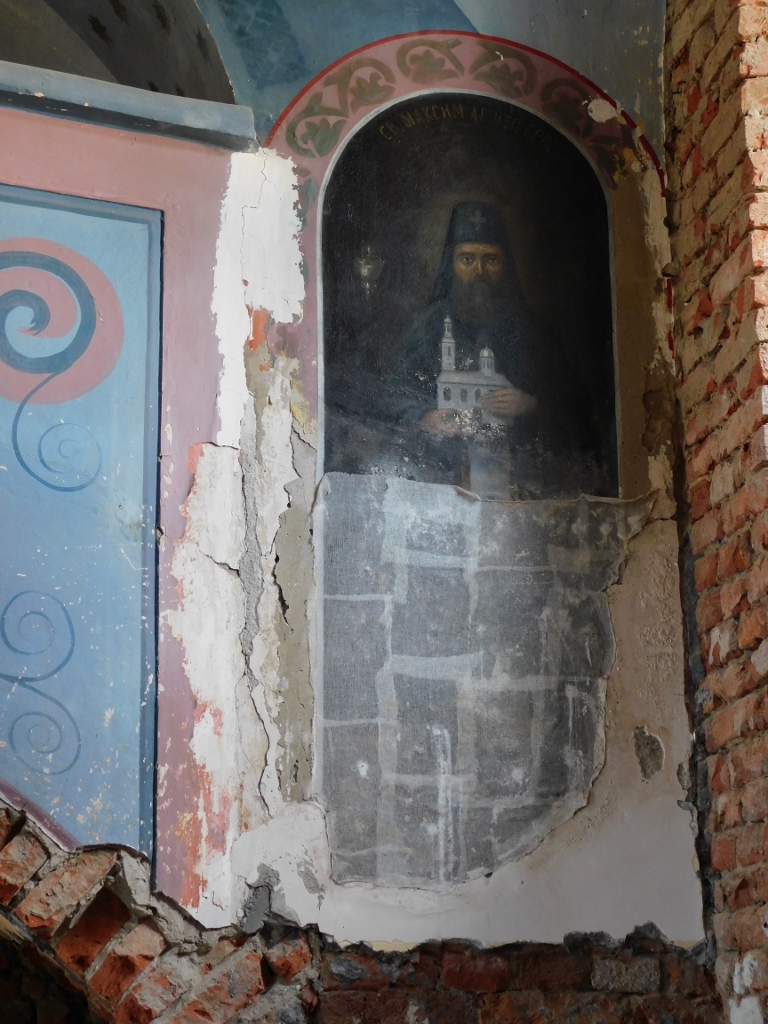 Church of St. Sava in Bečmen, the interior, a detail
Church of St. Sava in Bečmen, the interior, a detail
While I was still driving along the main street in Bečmen, I stopped at some point since there were some watermelons on offer. The owner of the house and the property right next to the street took his products out and displayed them on a trailer, while in the background I could see the field in which these watermelons grew. I guess this is as fresh as it can be. Just as a piece of data for the future and the inflation data, in August 2023, these watermelons cost RSD 50 per kilo (around 0.40 euros per kilo).
 Fresh watermelons on sale
Fresh watermelons on sale
Now I just followed this main street in the eastbound direction and towards the next big settlement and that is a Belgrade municipality – Surčin. There I wanted to see the Church of Saint Paraskeva of the Balkans that is also a monument of culture and that is located in the centre of the settlement.
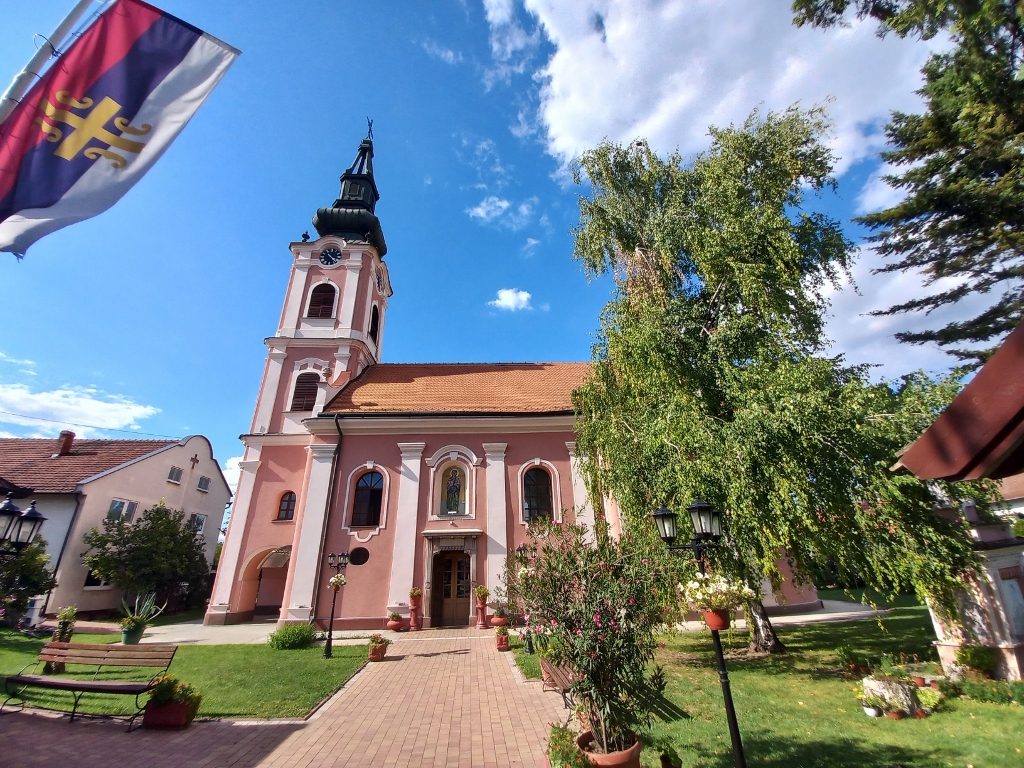 Church of Saint Paraskeva of the Balkans
Church of Saint Paraskeva of the Balkans
The church was built in the place of an older wooden church in 1777 and it follows the concept of the other churches I visited during this trip – in the east there is a semi-circular apse, while in the west there are a tall bell-tower and a narthex.
In addition to the church, the very churchyard with its fence, various structures and monuments that are situated there has an important cultural and historic value.
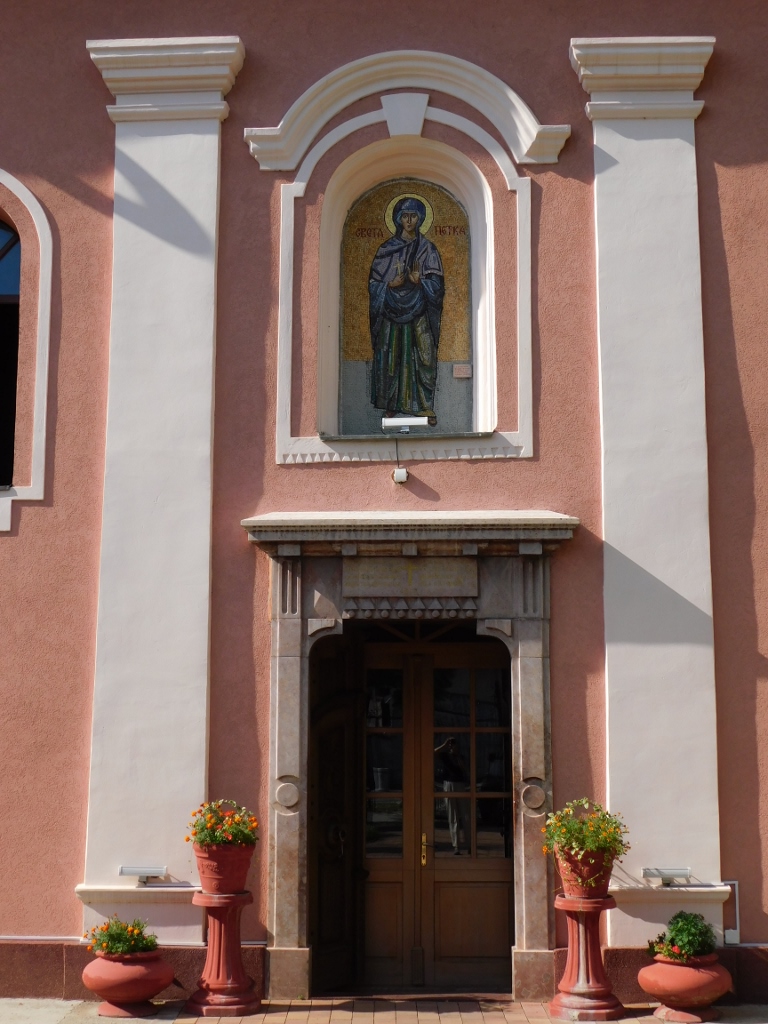 Church of Saint Paraskeva of the Balkans, the south entrance
Church of Saint Paraskeva of the Balkans, the south entrance
The gilded iconostasis was made in 1801 and it is decorated with a total of 37 icons painted in the period from 1807 to 1809. The icons were made by the then most famous painter from Sremski Karlovci, Stefan Gavrilović. The wall paintings were done in 1811.
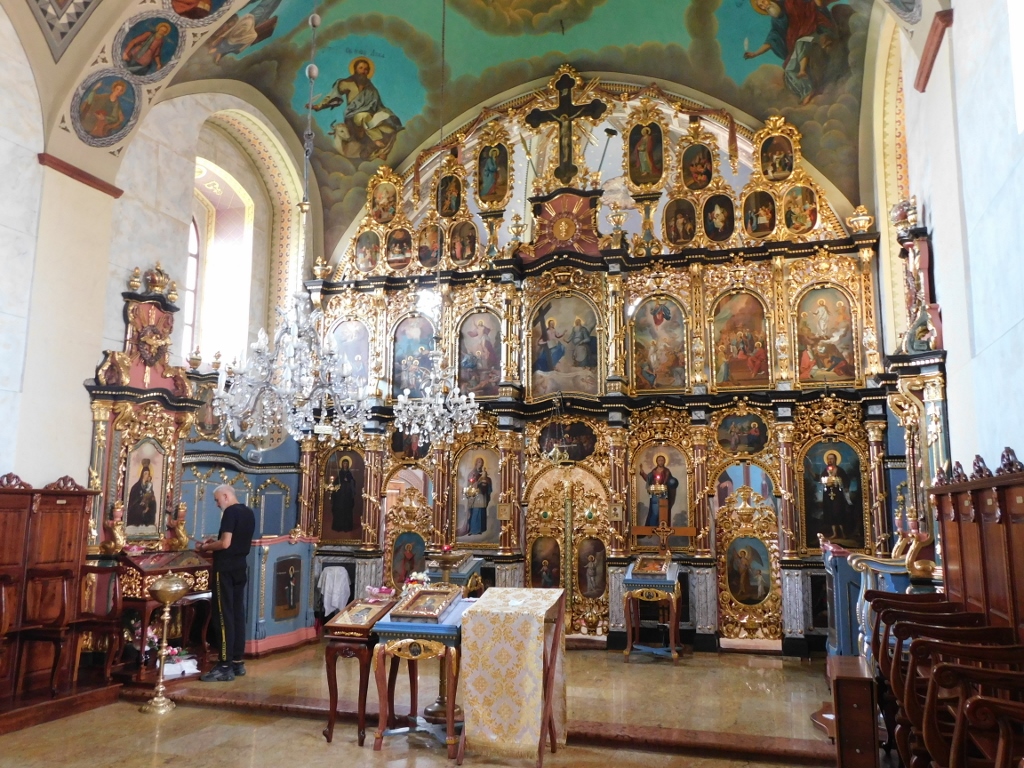 Church of Saint Paraskeva of the Balkans, the interior
Church of Saint Paraskeva of the Balkans, the interior
 Church of Saint Paraskeva of the Balkans, the interior, a detail
Church of Saint Paraskeva of the Balkans, the interior, a detail
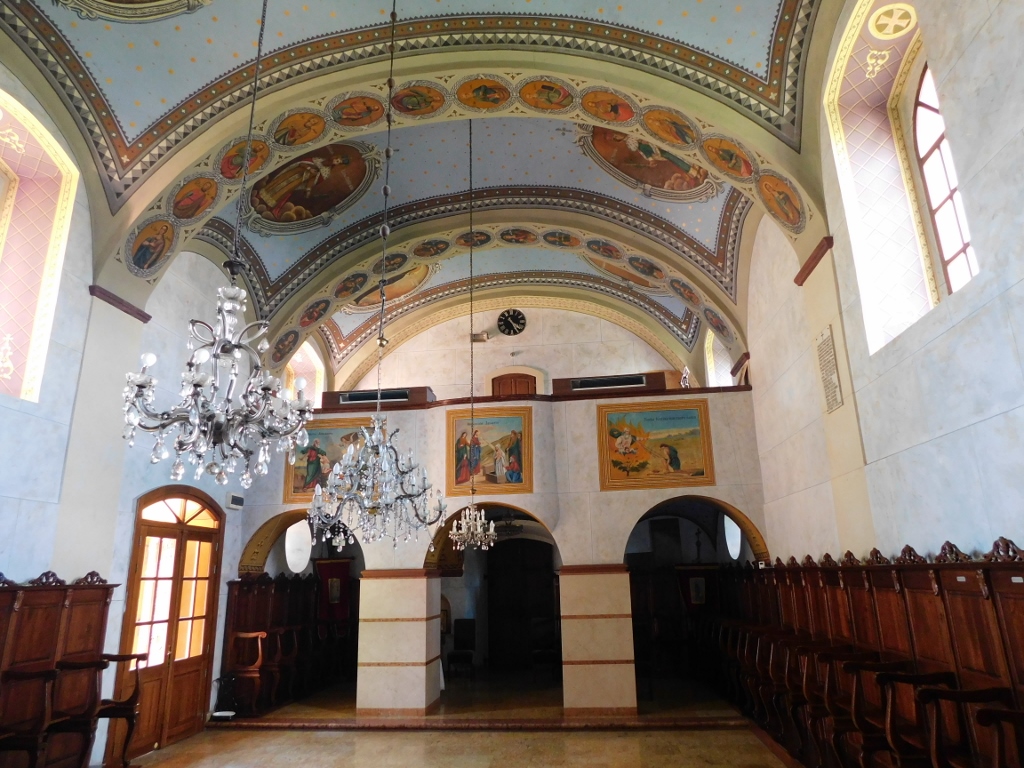 Church of Saint Paraskeva of the Balkans, the interior
Church of Saint Paraskeva of the Balkans, the interior
Apart from the artistic pieces that can be seen during a visit, the church also has an important archives with different documents some of which date back to the 18th century, as well as numerous printed books from the 18th and the 19th centuries.
Since I was well on my way back home, continuing from Surčin towards Novi Beograd, I also drove through the settlement of Ledine and there I ventured into some of its narrow streets in order to find yet another place of interest. I would have had problems noticing it, had I not by chance come across a man who lives there and so I asked him where the place I was looking for was. As it turned out, he used to be in charge of its keeping. Sometimes I do have this impression that I have a lot of luck during these travels of mine. In any case, I was grateful both to him and to the higher power, while he walked in front of my car and led me for a couple of dozen metres further where he showed me the location of the Jewish Cemetery in Ledine.
 Area of the Jewish Cemetery in Ledine
Area of the Jewish Cemetery in Ledine
Why do I think I would have problems noticing this place? Well, to put it simply, there are no signs and at first sight it looked just like a ravine with overgrown vegetation. Only when the visitor goes down you can see the memorial well.
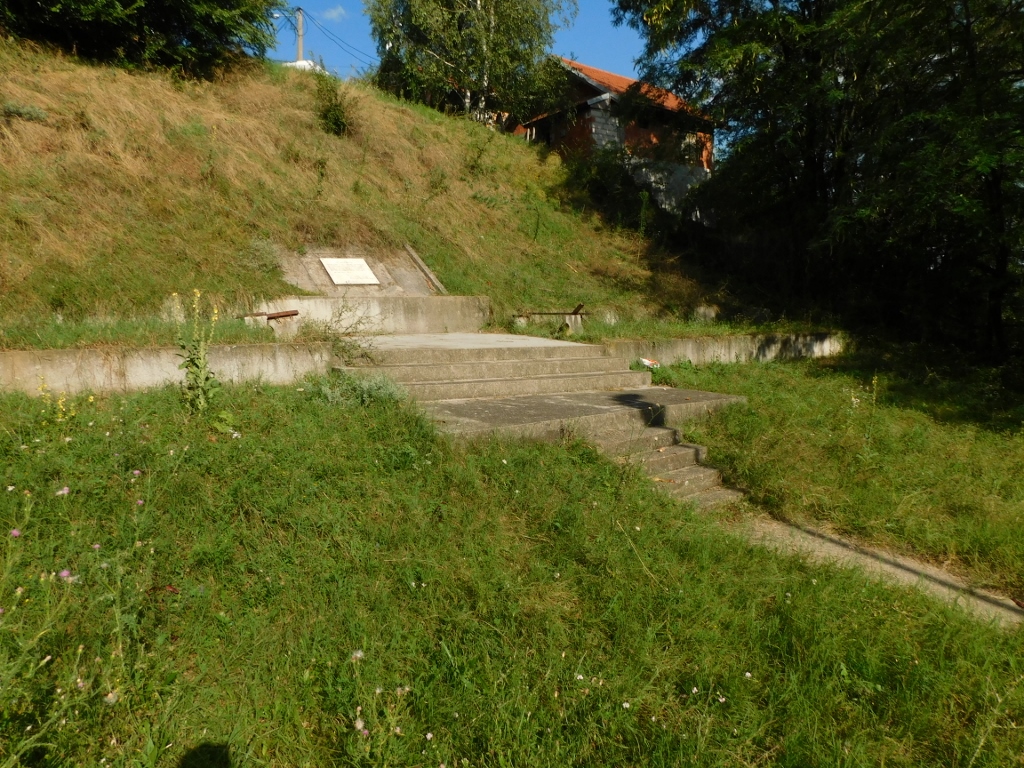 Jewish Cemetery in Ledine
Jewish Cemetery in Ledine
This is the place where in February 1942 Germans shot and buried a group of 350 Jews that mostly consisted of women and children.
Today, this seems like a rather neglected place, probably because it is so tucked away and I’m certain that few people tend to do the sightseeing of such places.
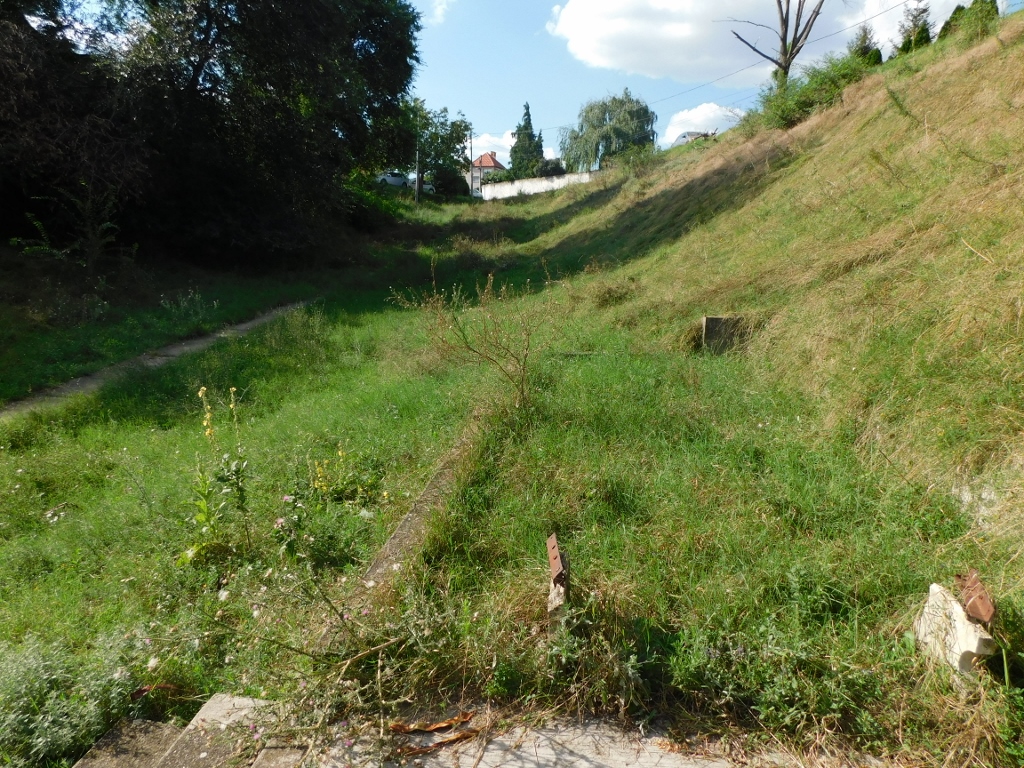 Jewish Cemetery in Ledine – view towards the street
Jewish Cemetery in Ledine – view towards the street
It was by coincidence that I started and finished this day trip of mine by visiting places where numerous people were killed and buried during WWII. Although that time, as well as the events from that period, seem far away and pale over time, I think it is important to keep the memory of all of this even with superficial visits such as this one.
But, until the death catches up with us, the life can be beautiful and filled with fascinating details and events. It is vital to recognise them and enjoy in them.
And so, after the completion of all my visits of the day and quite close to the Jewish Cemetery in Ledine, I had an opportunity to look at the surroundings, as well as the planes that use this route in order to approach Belgrade airport and get ready for the landing.
 Jewish Cemetery in Ledine and a plane
Jewish Cemetery in Ledine and a plane
I even walked around a little and found a fantastic viewpoint nearby, just in time to see yet another plane on its way to the airport.
 View at the southwest parts of Belgrade
View at the southwest parts of Belgrade
Although I did start with this trip without much enthusiasm, thinking it would be boring, I was absolutely delighted and very content in the end. There were many more interesting and beautiful details than expected. I guess this is the way we should go through our lives: boldly, but also open to all we can come across.
Here is once again the map that shows the places I visited during this trip: